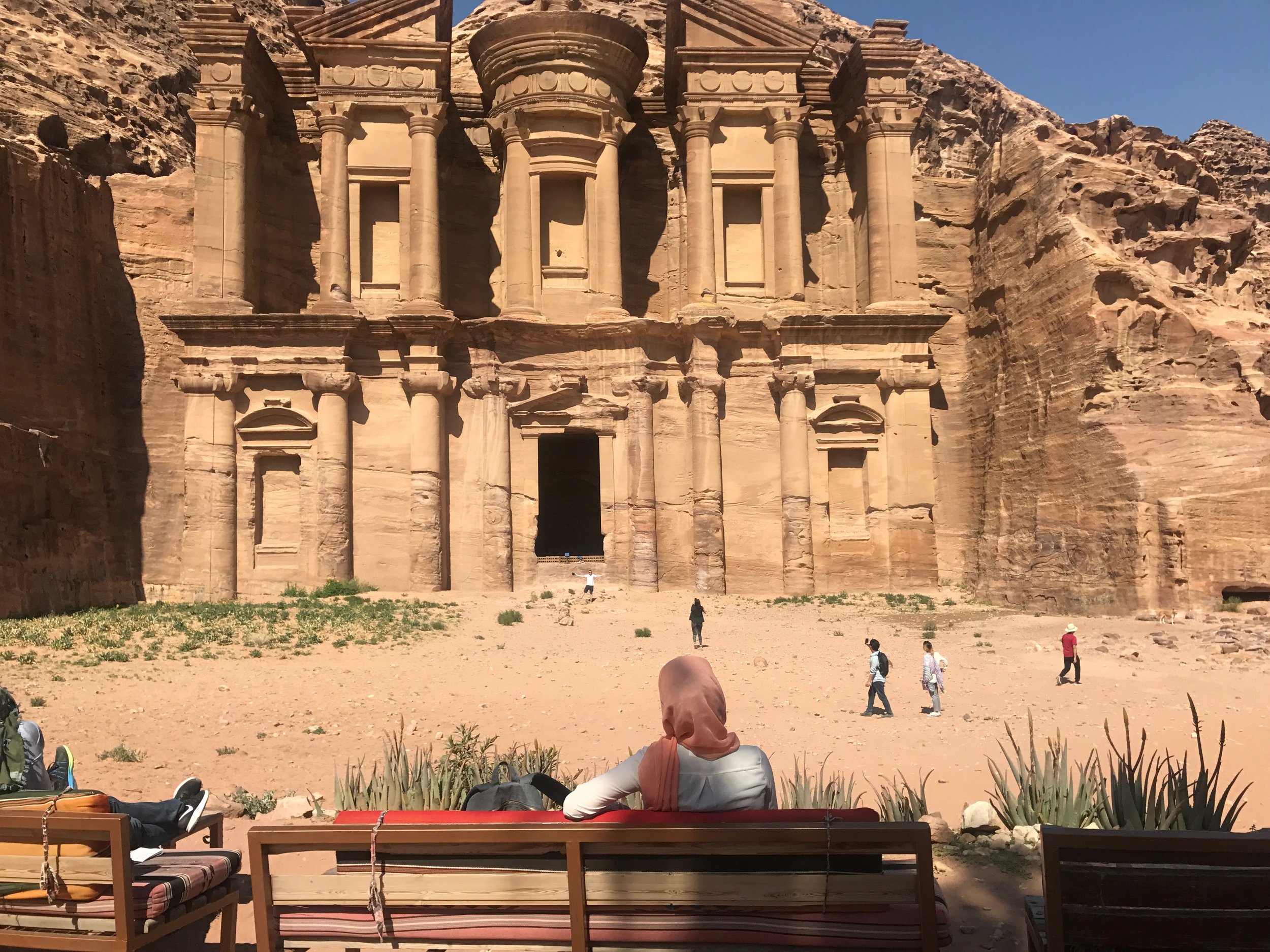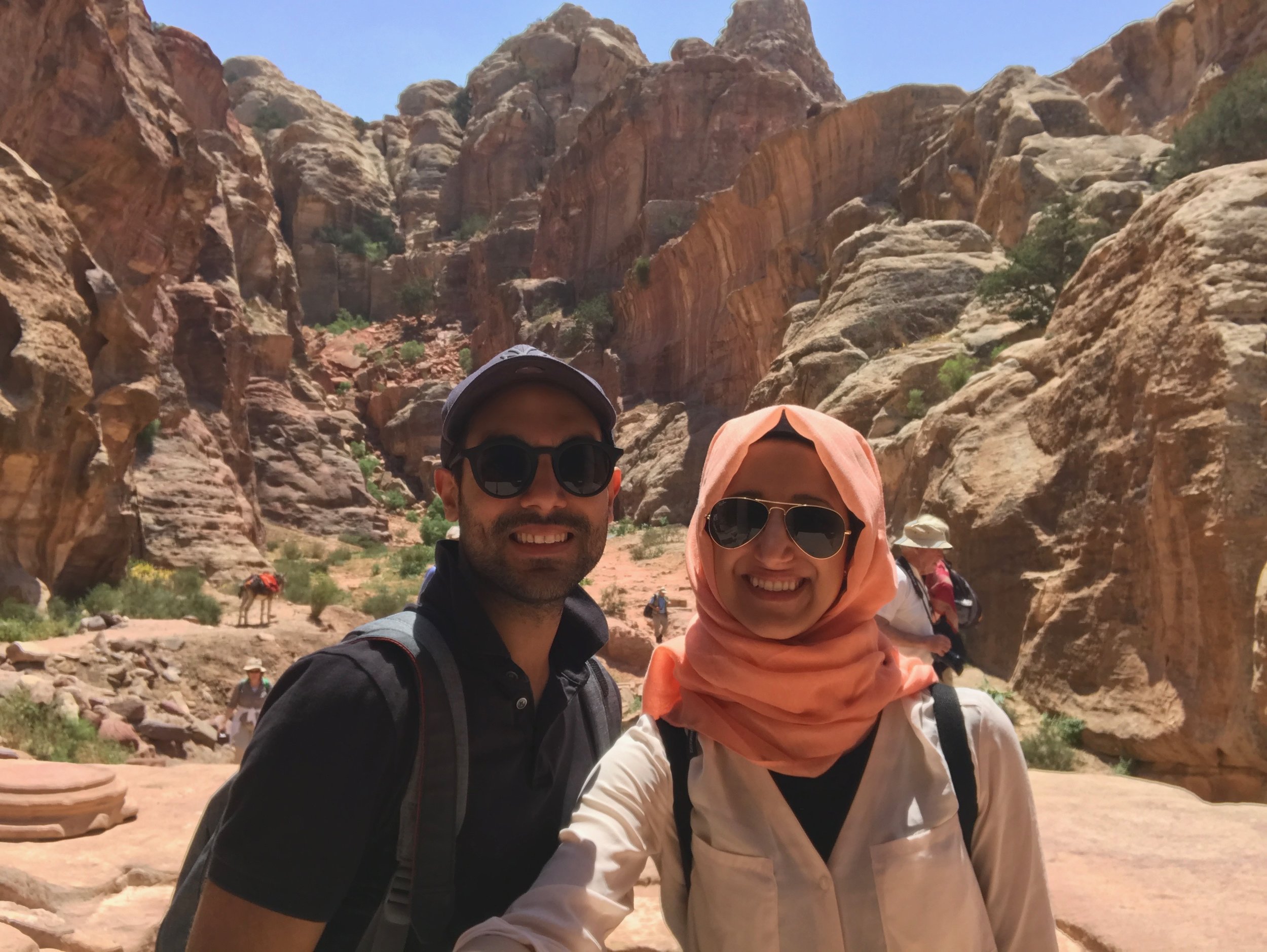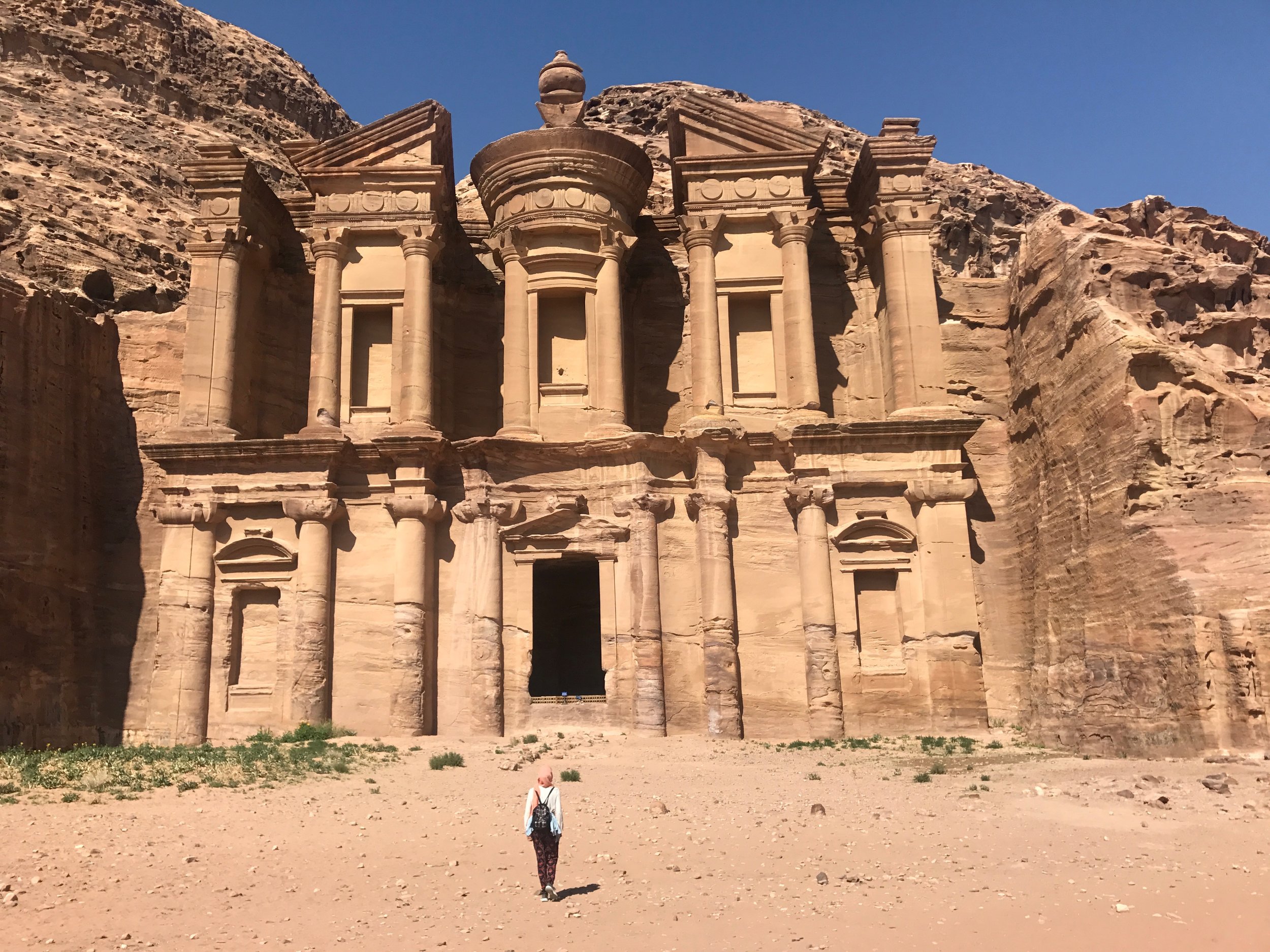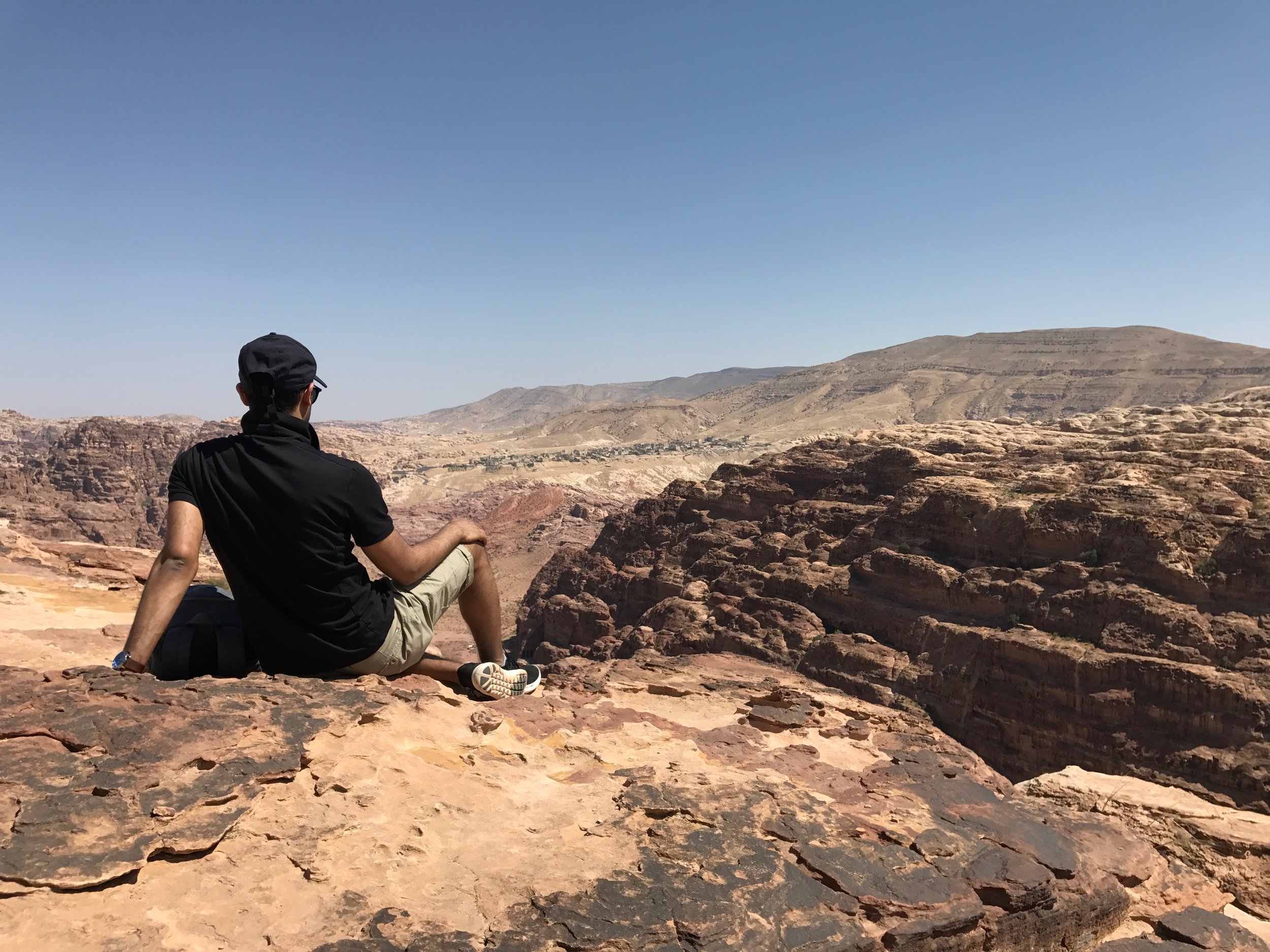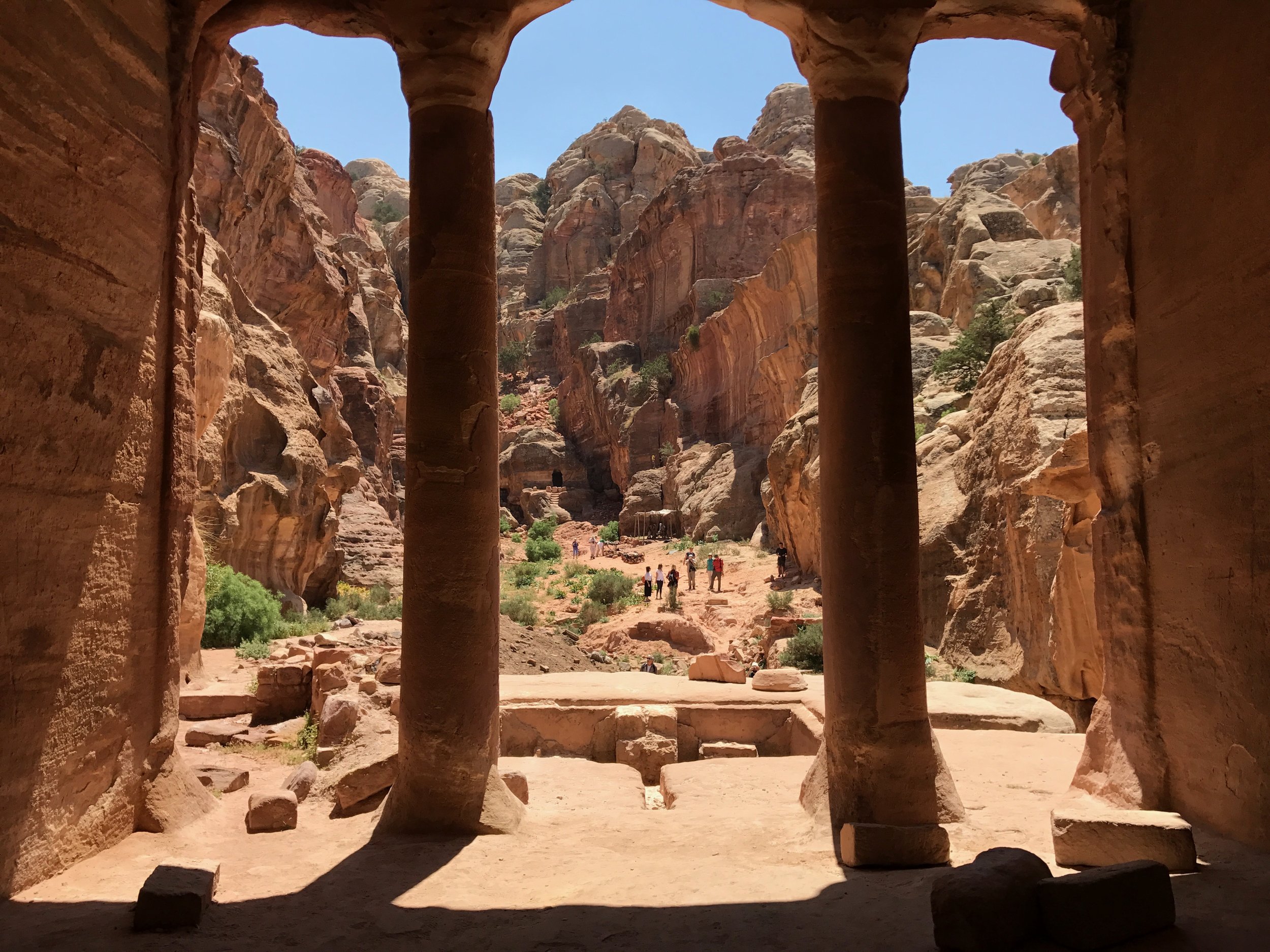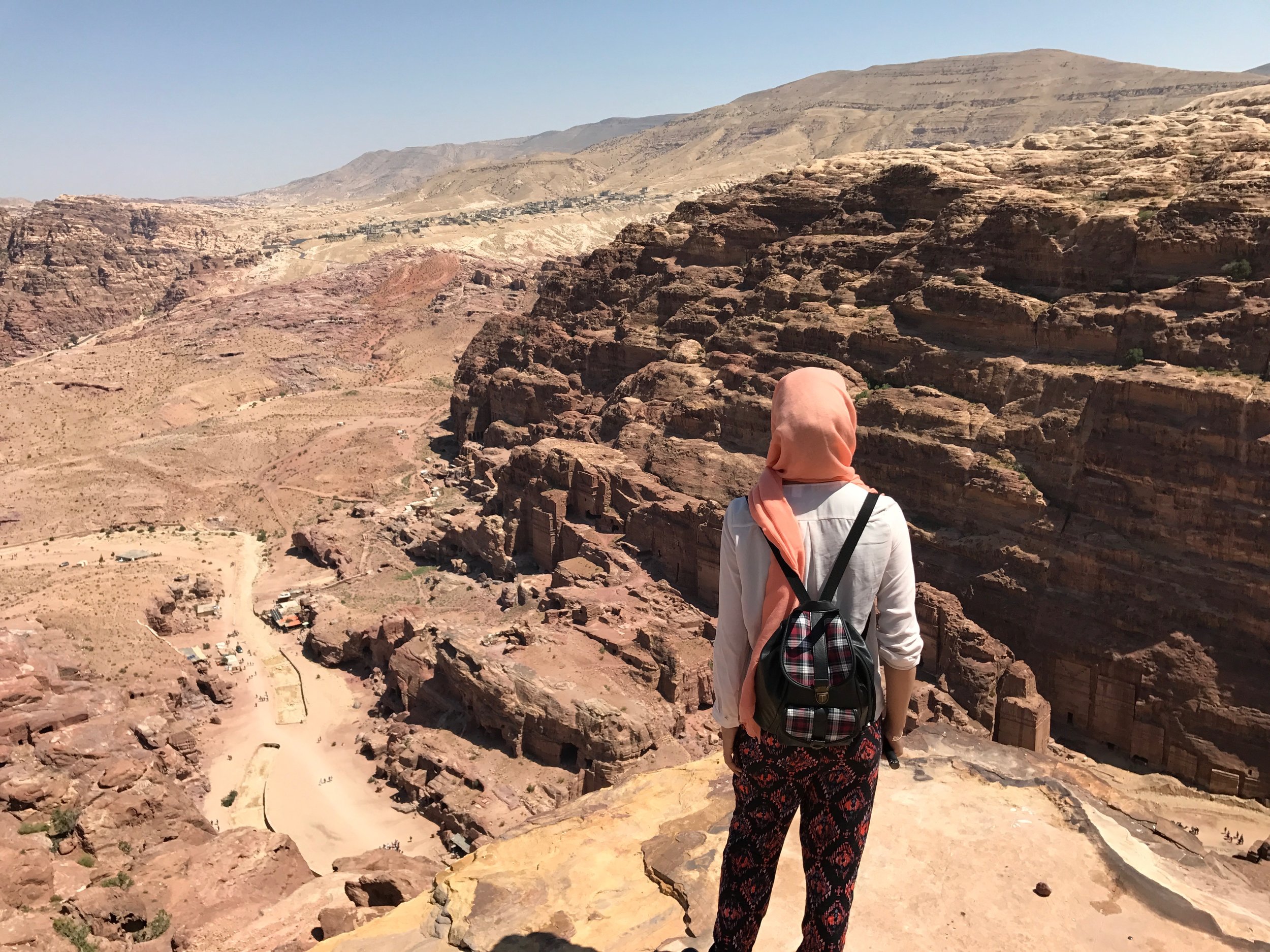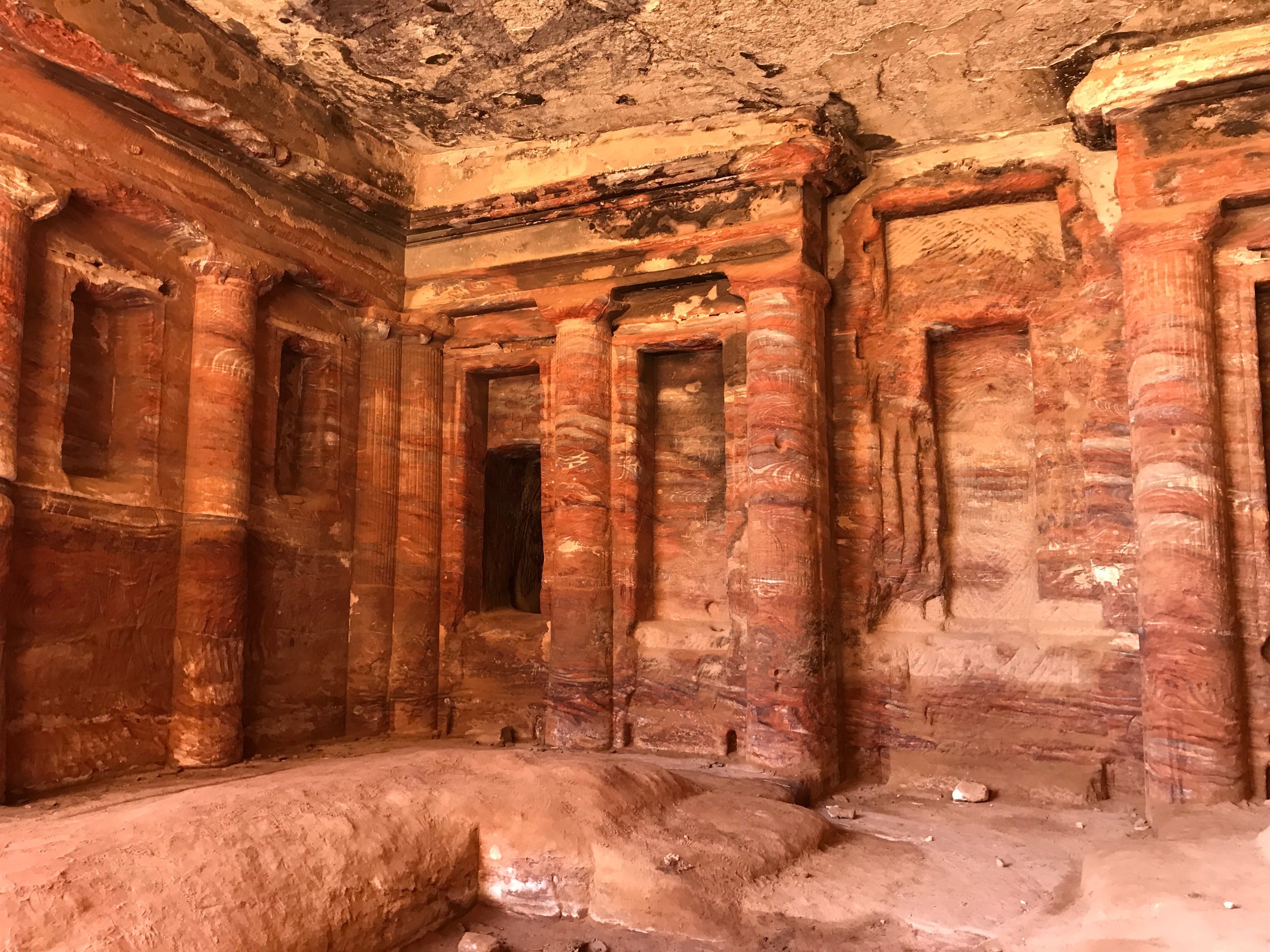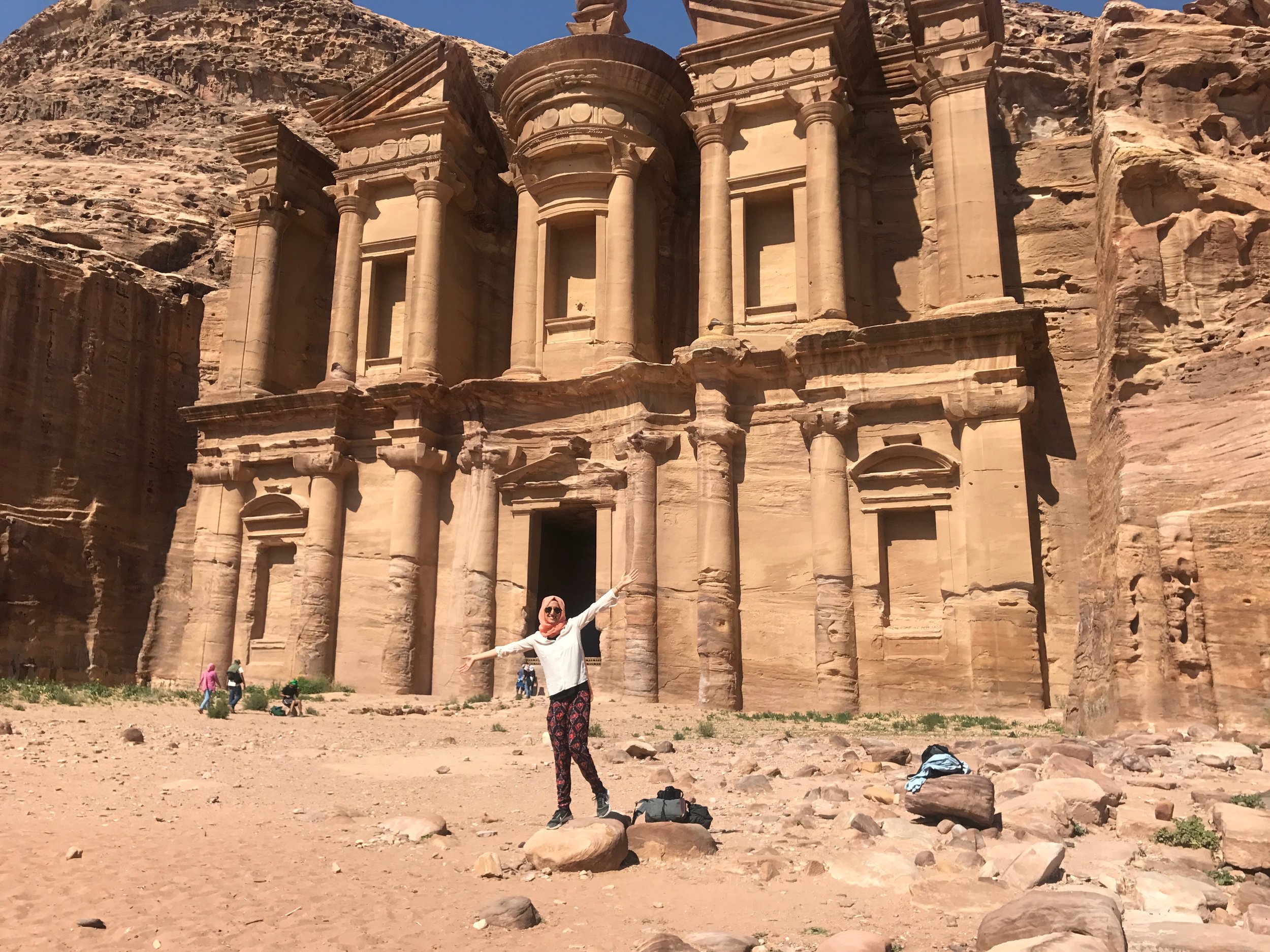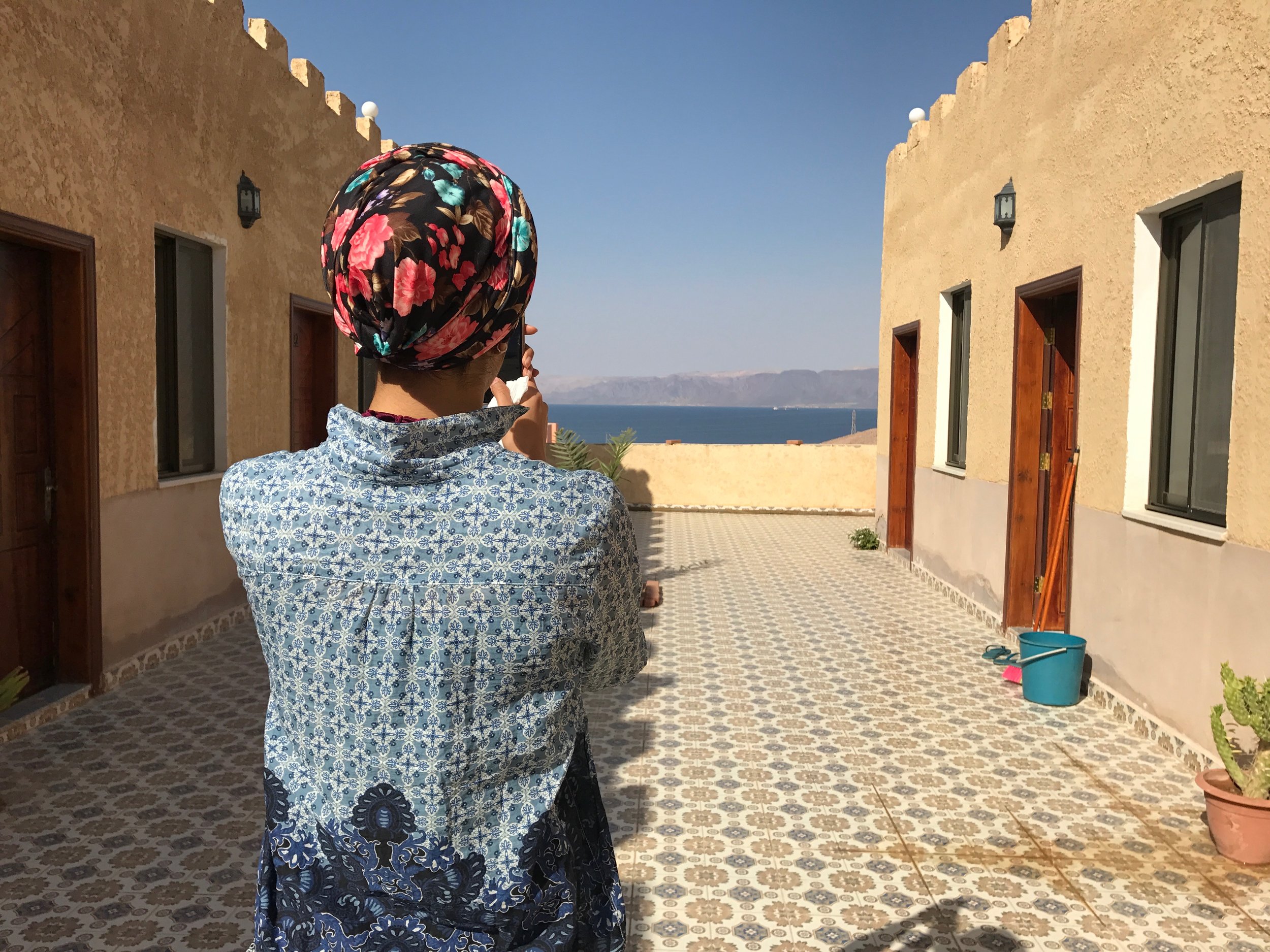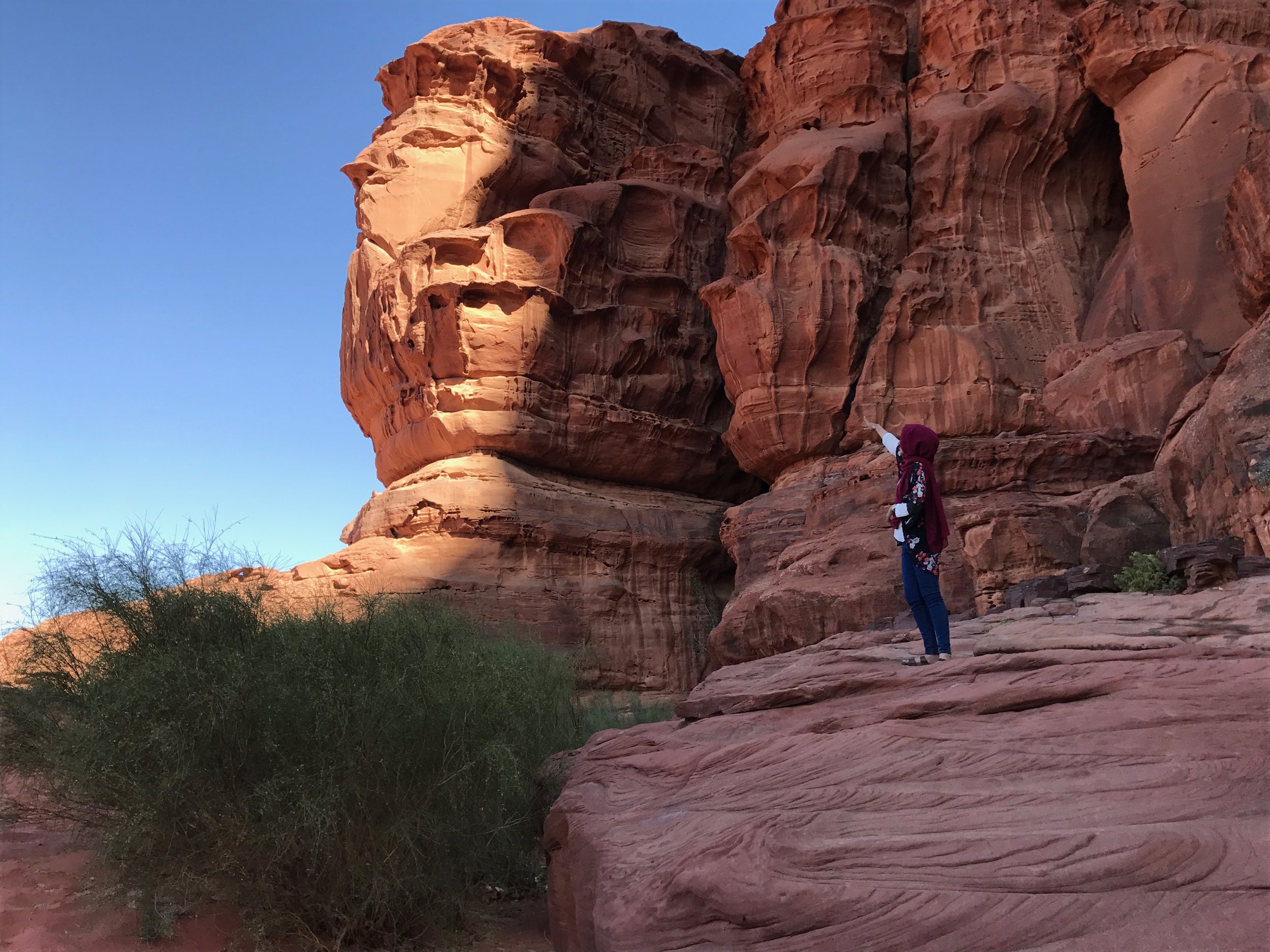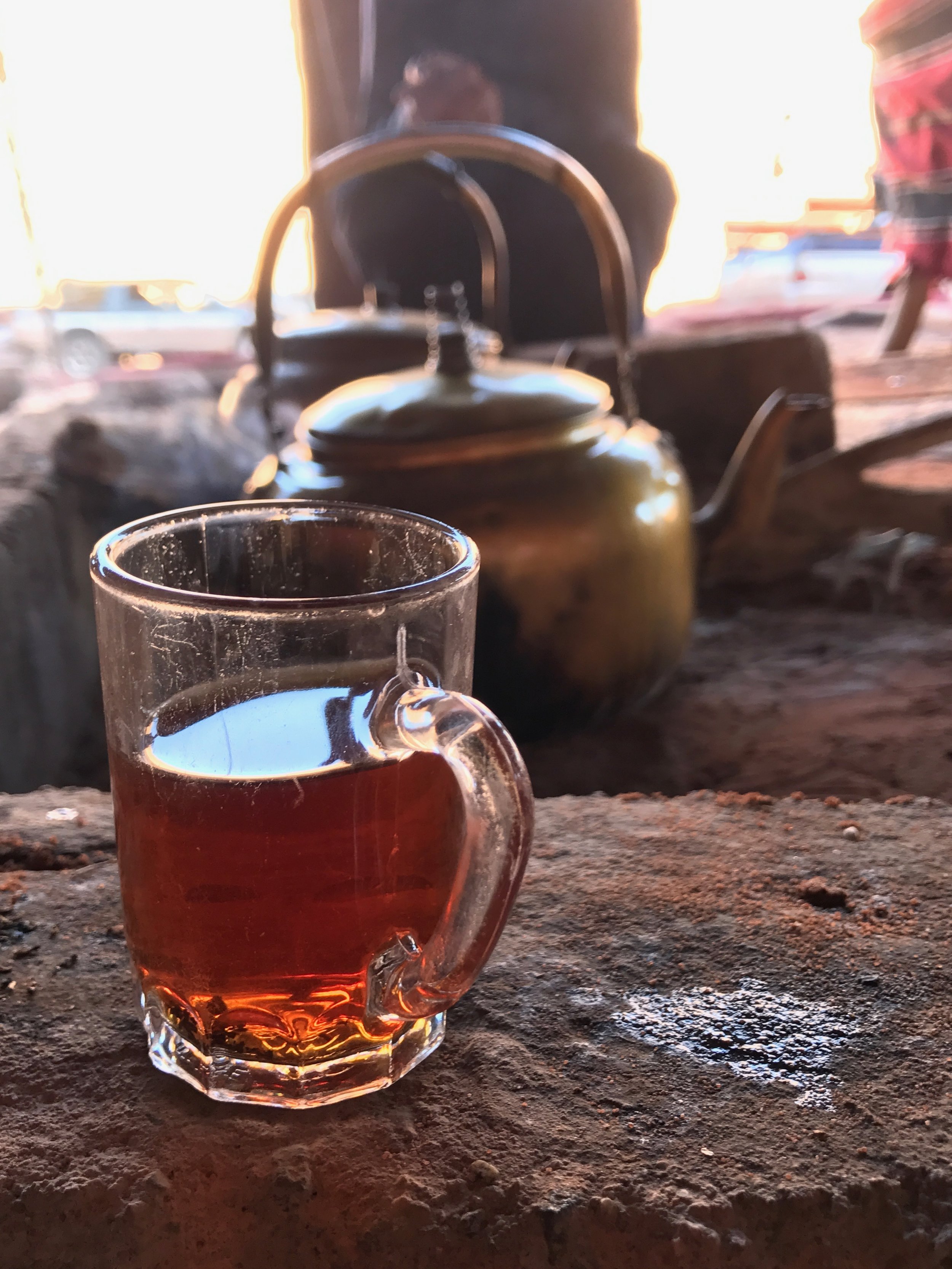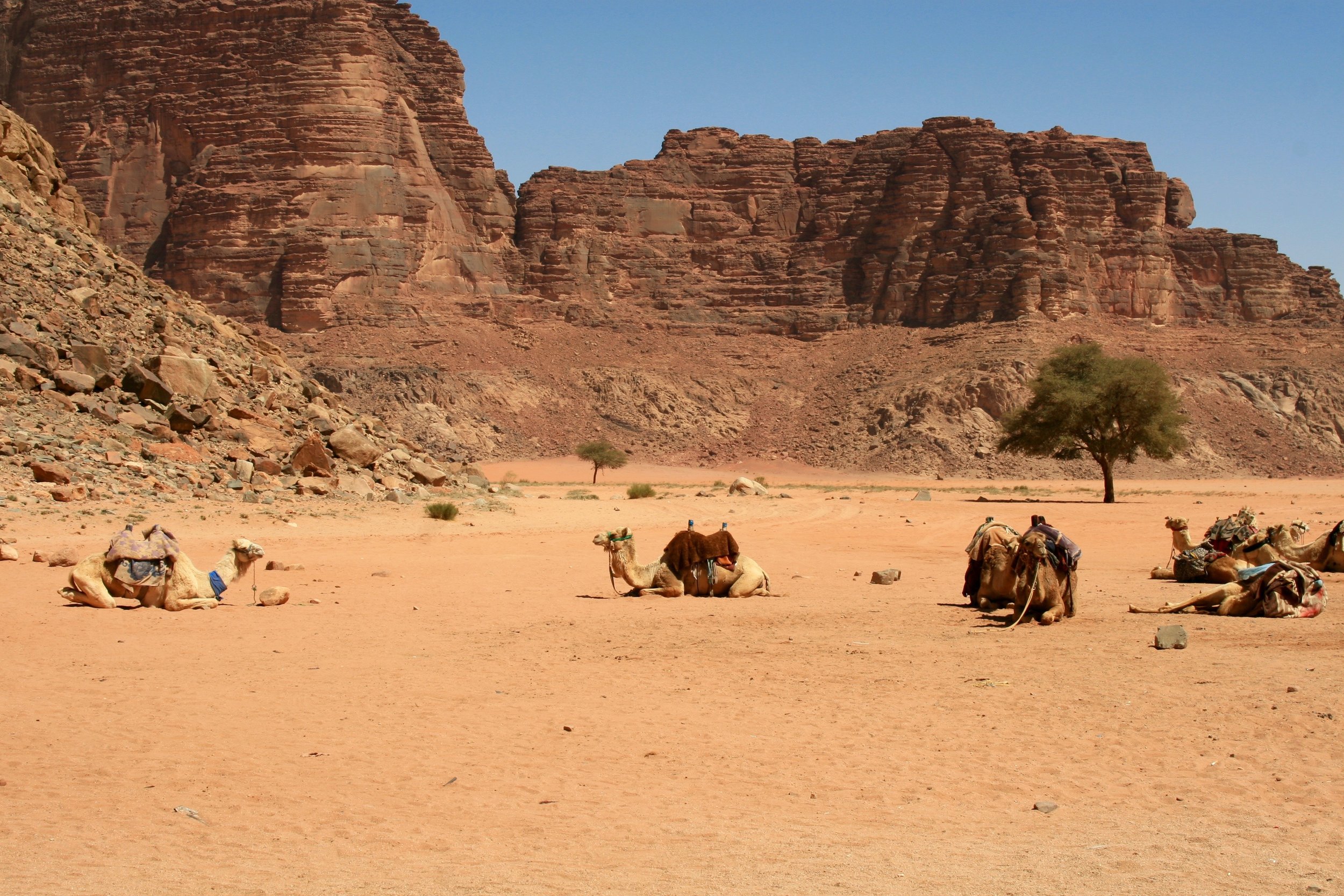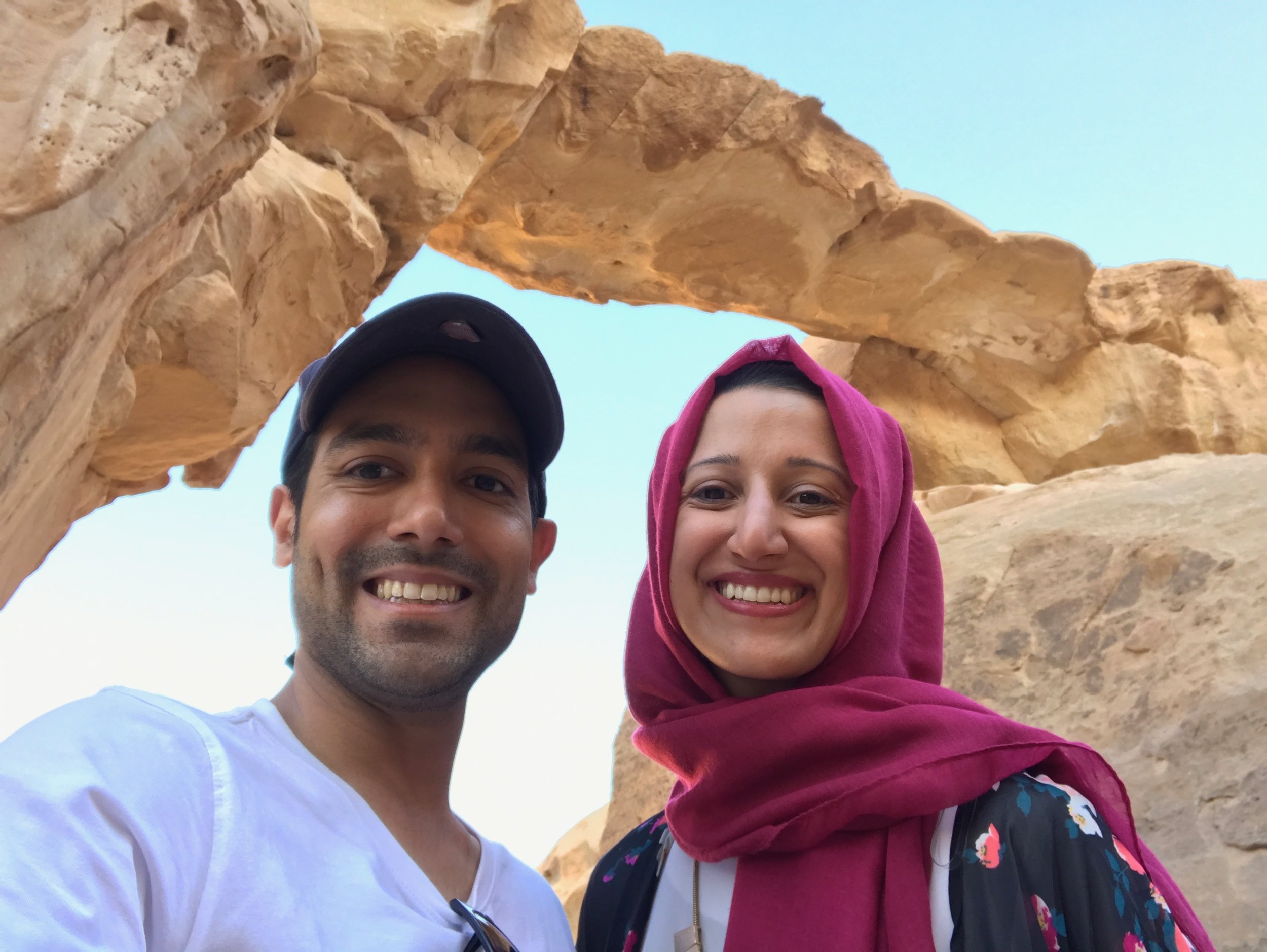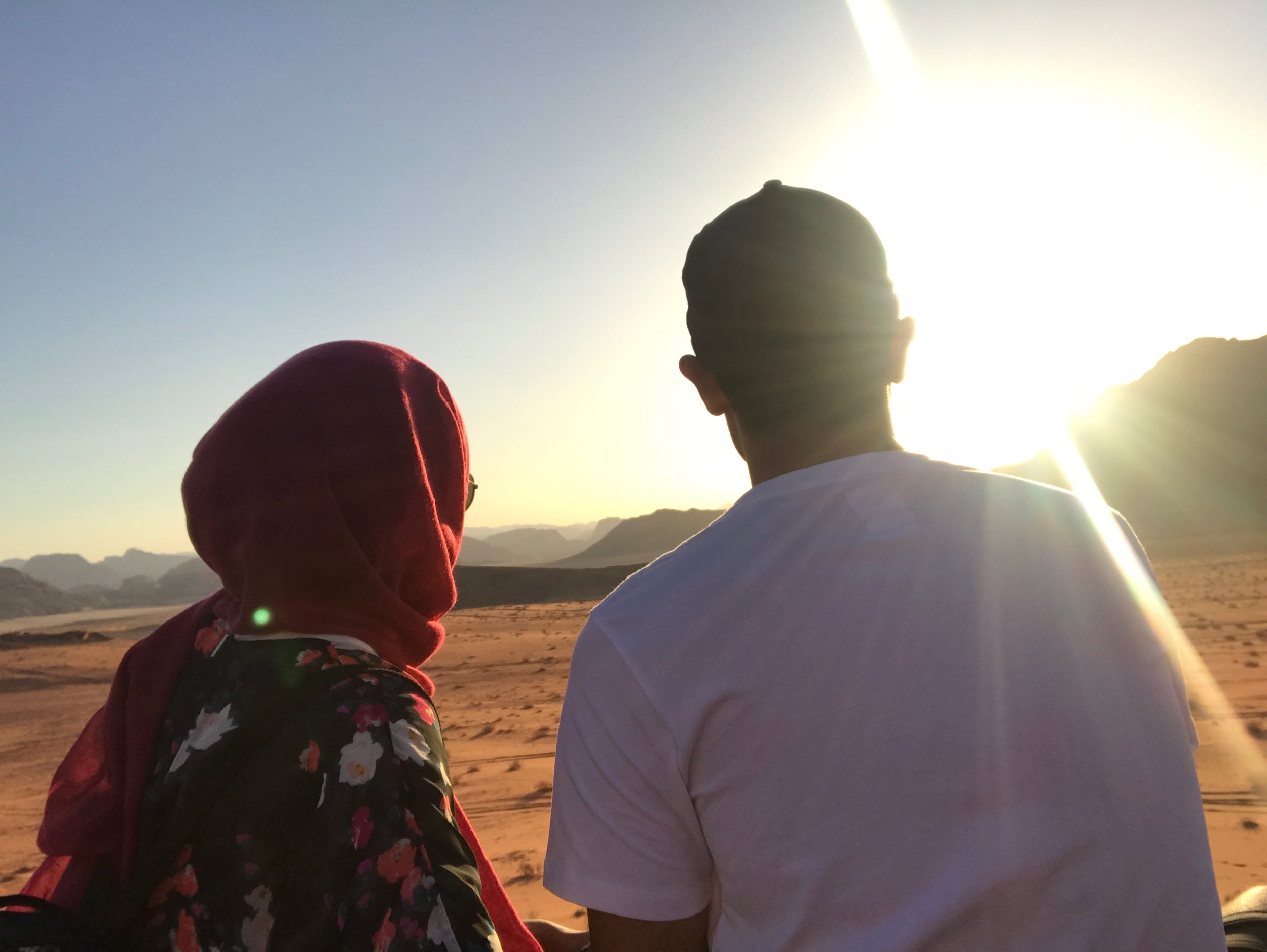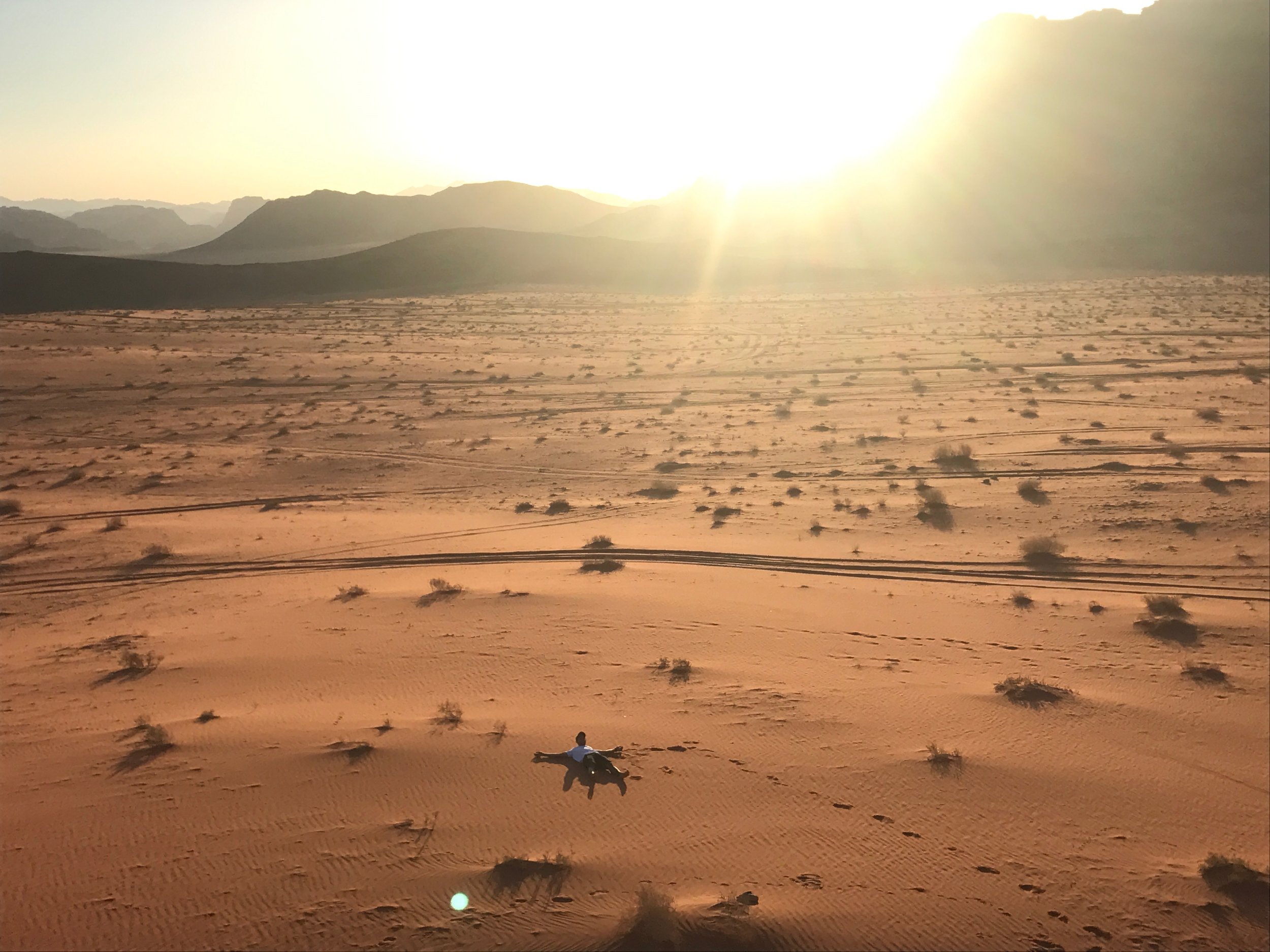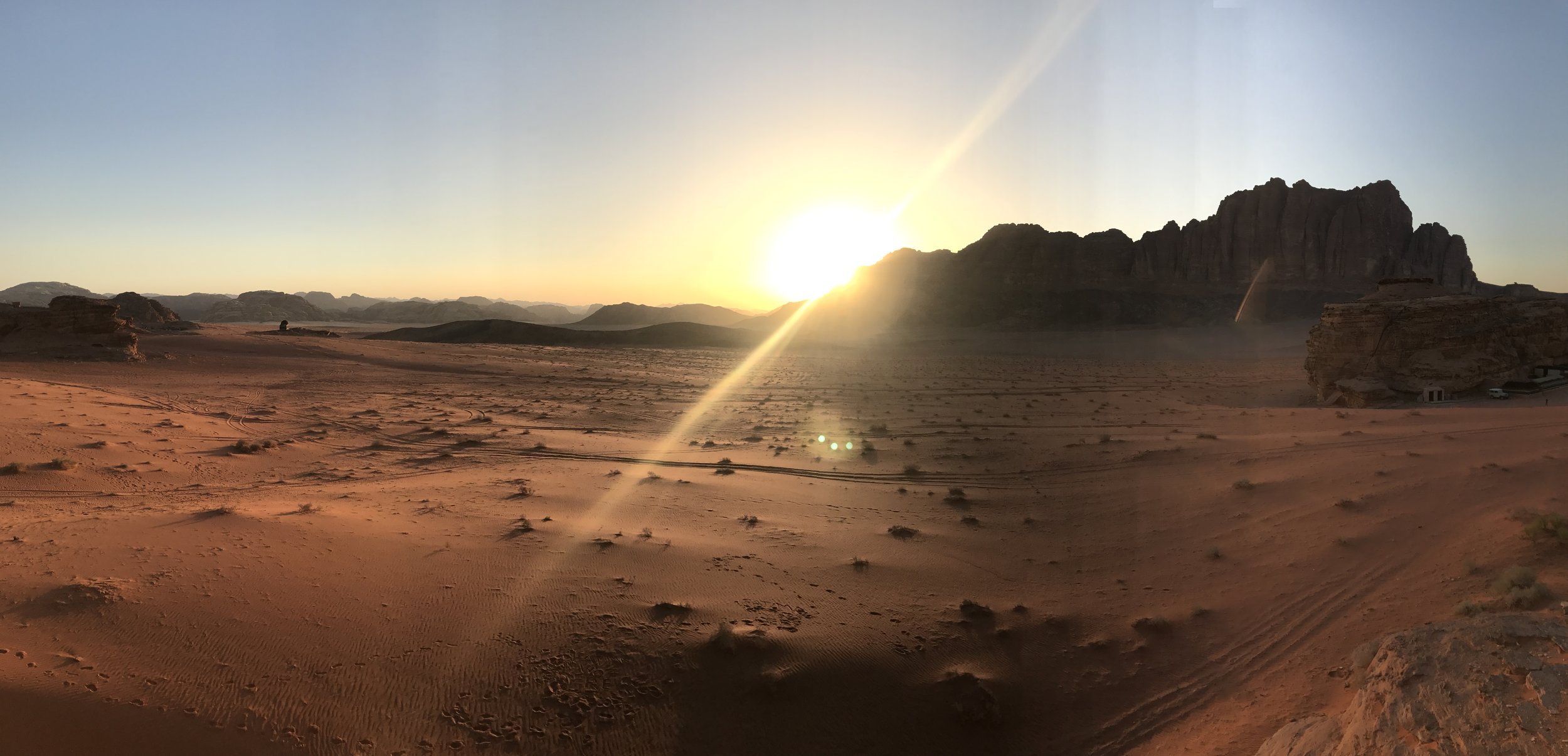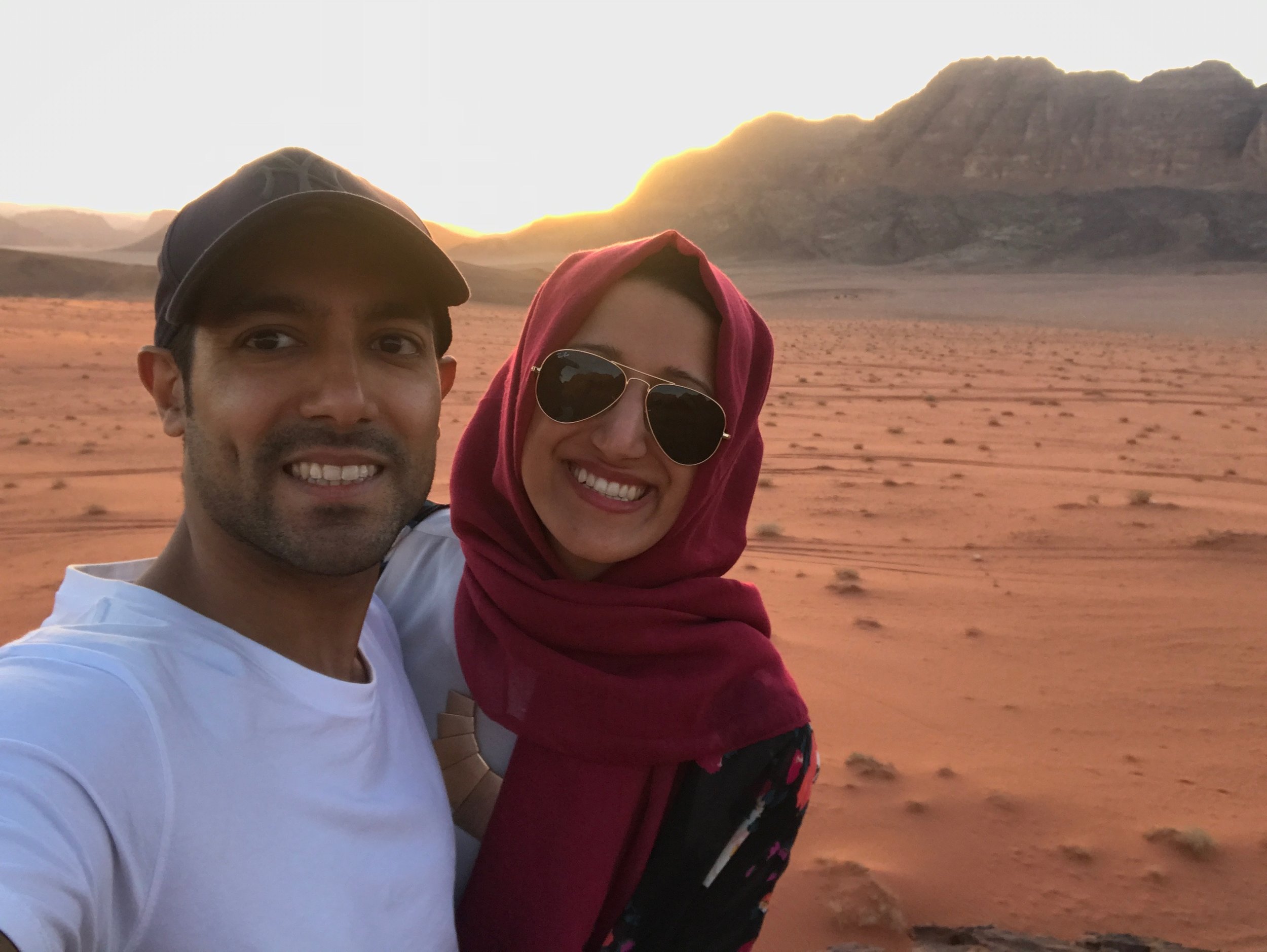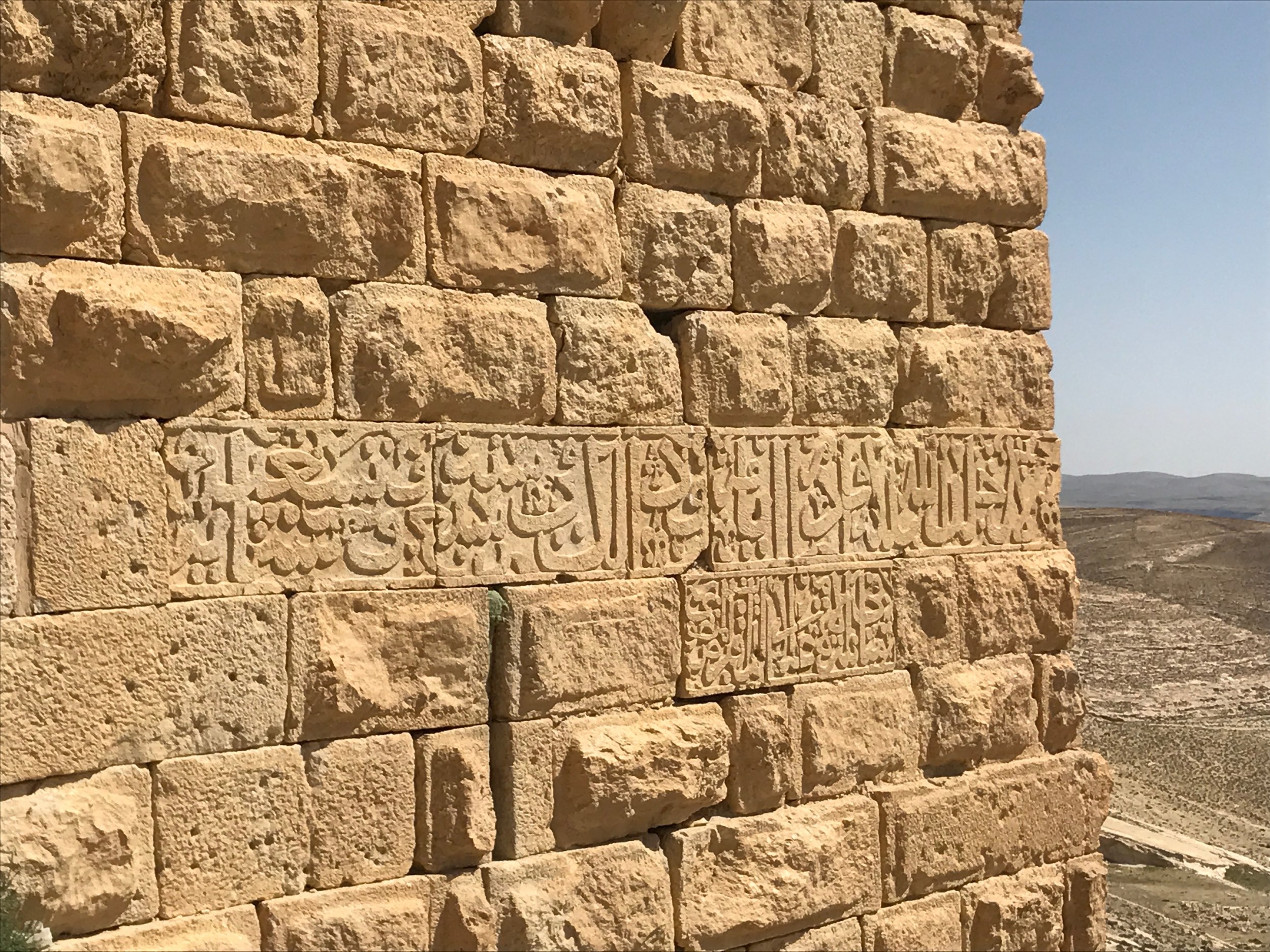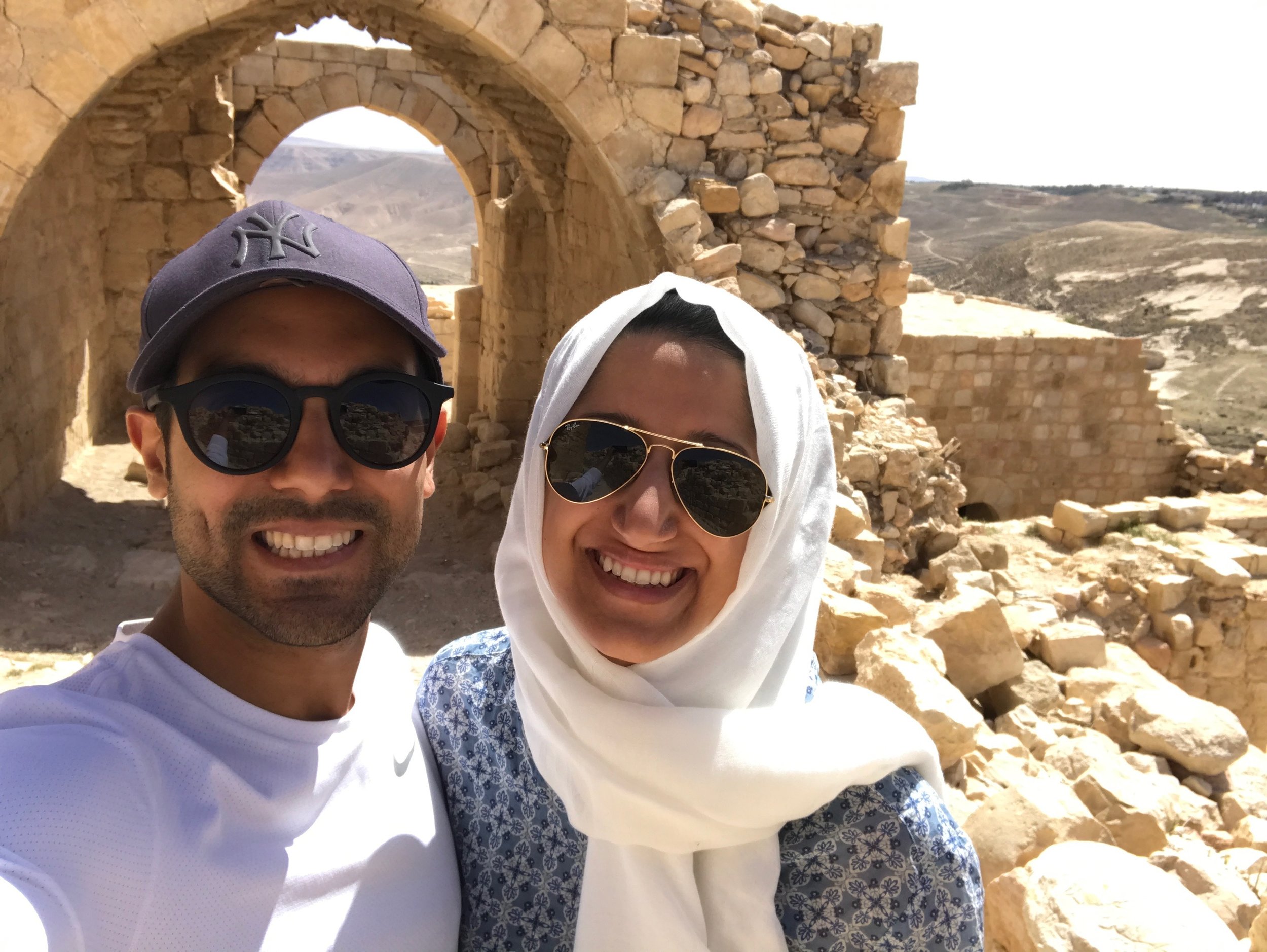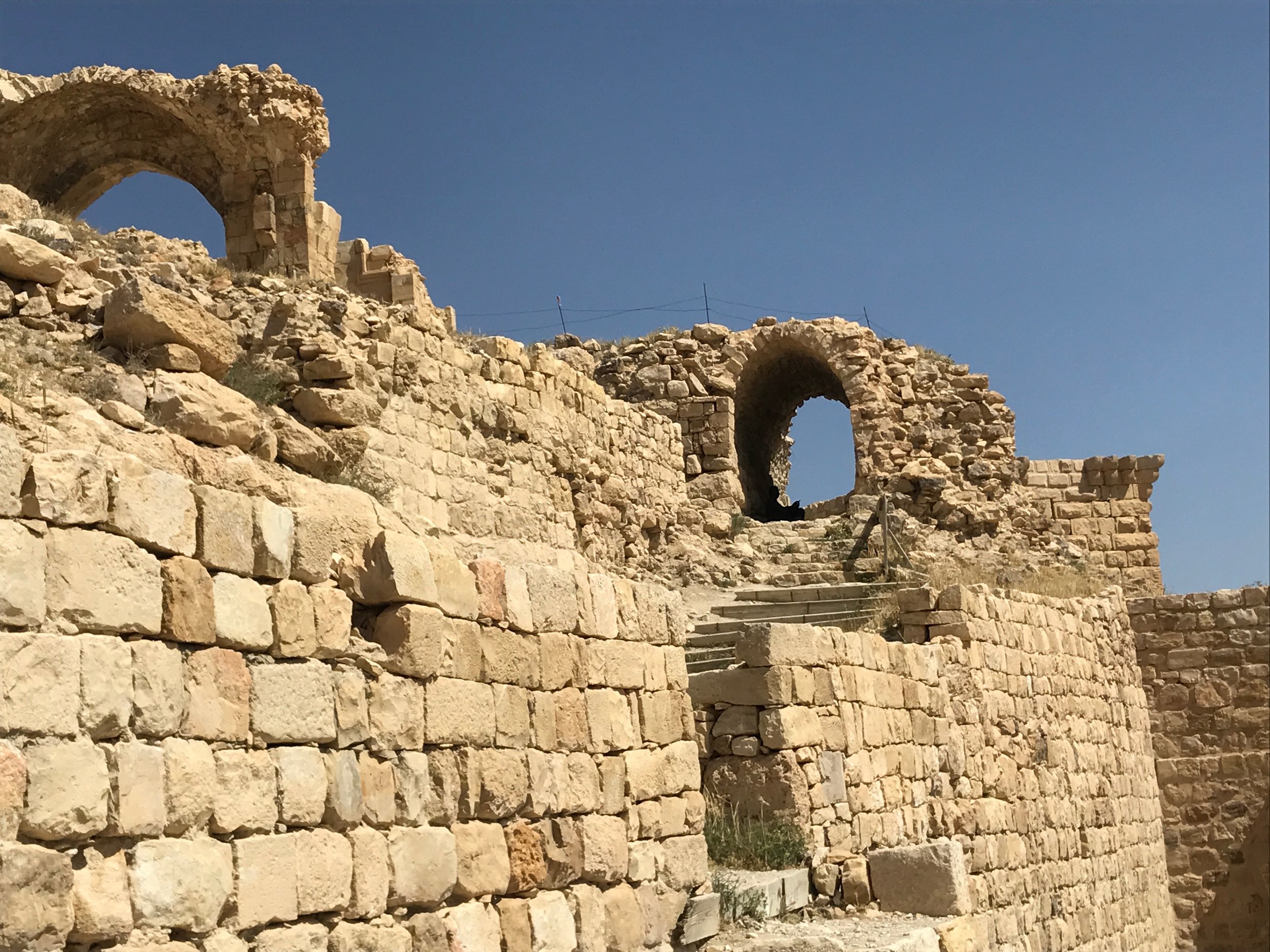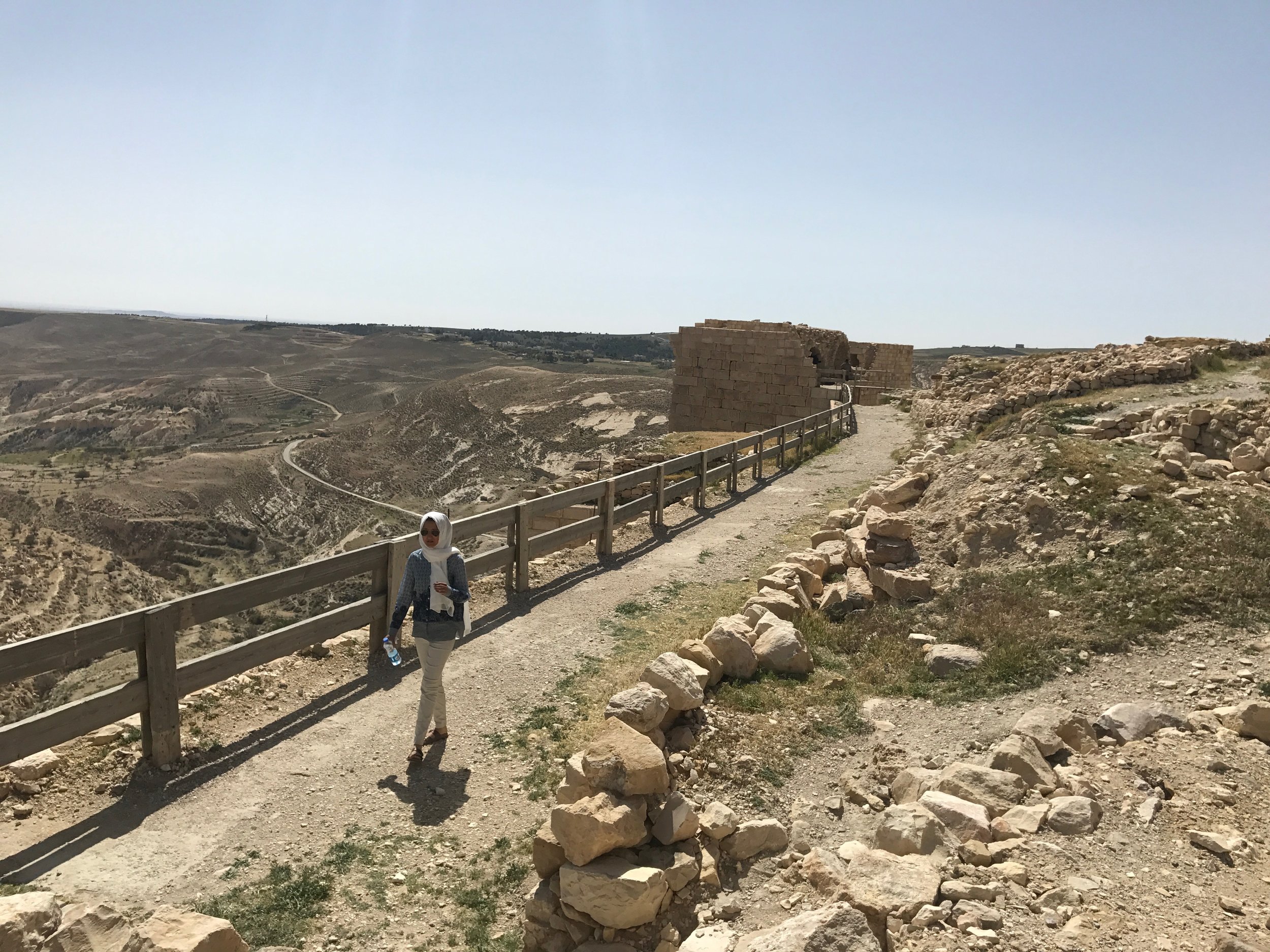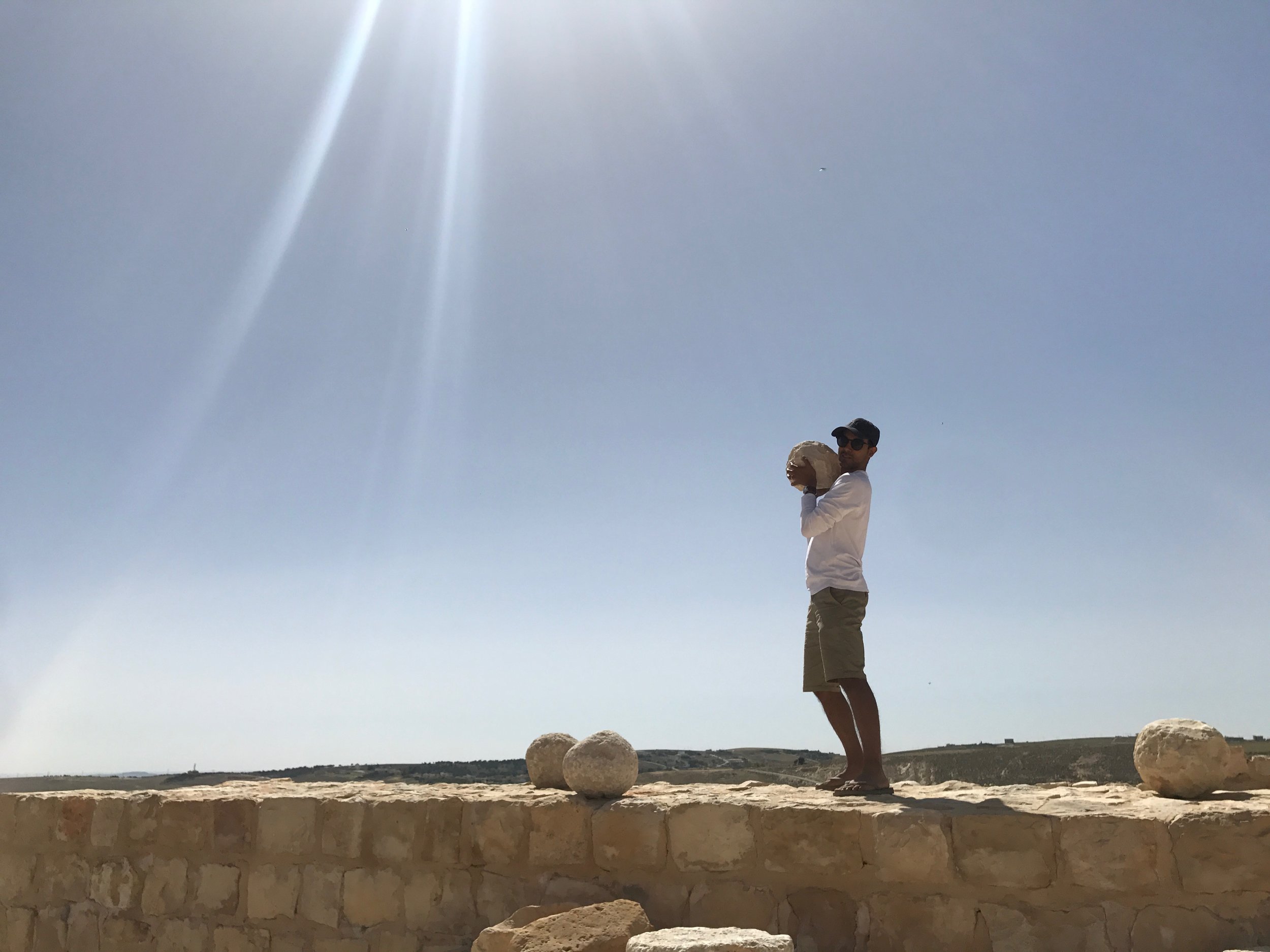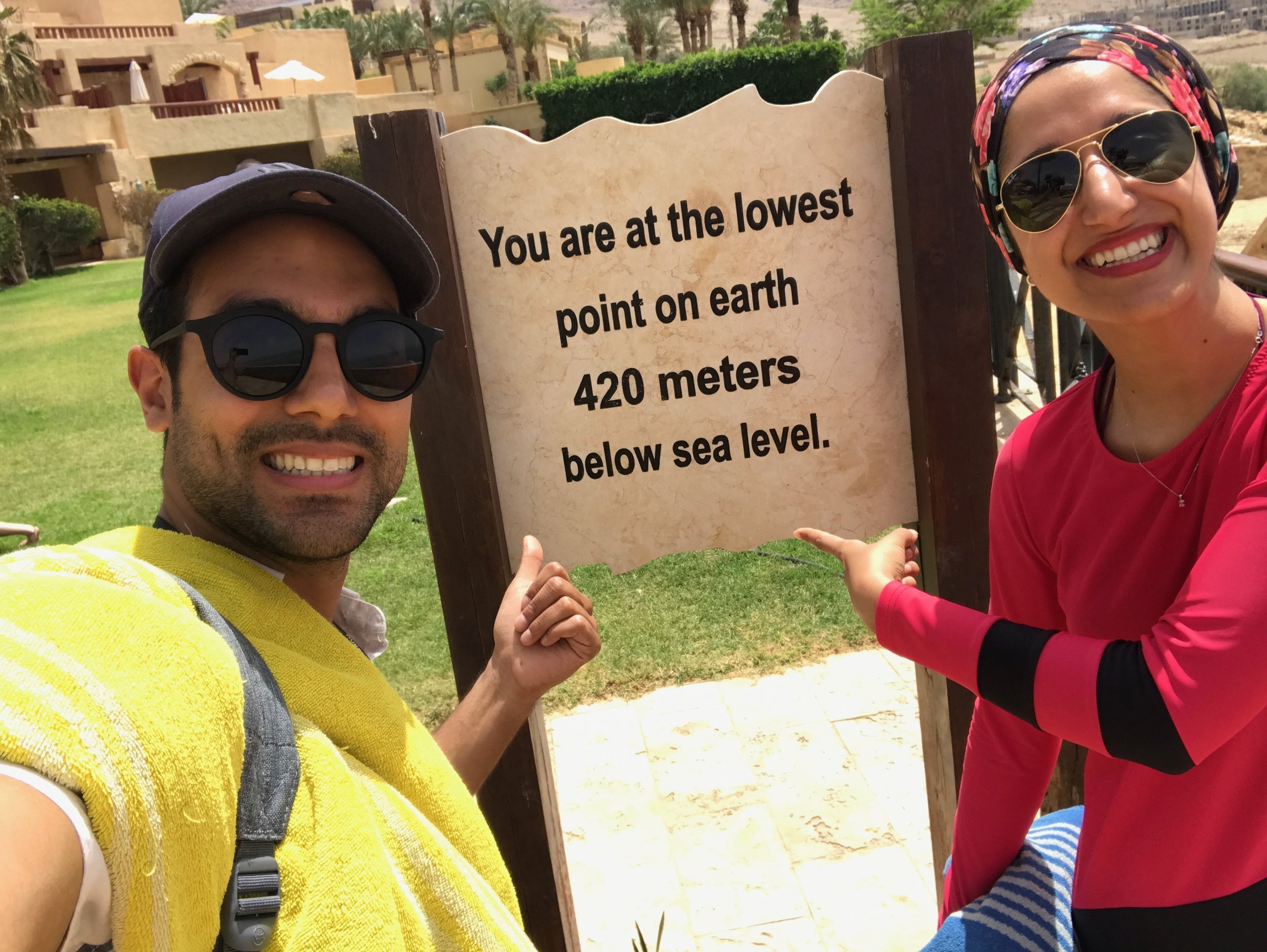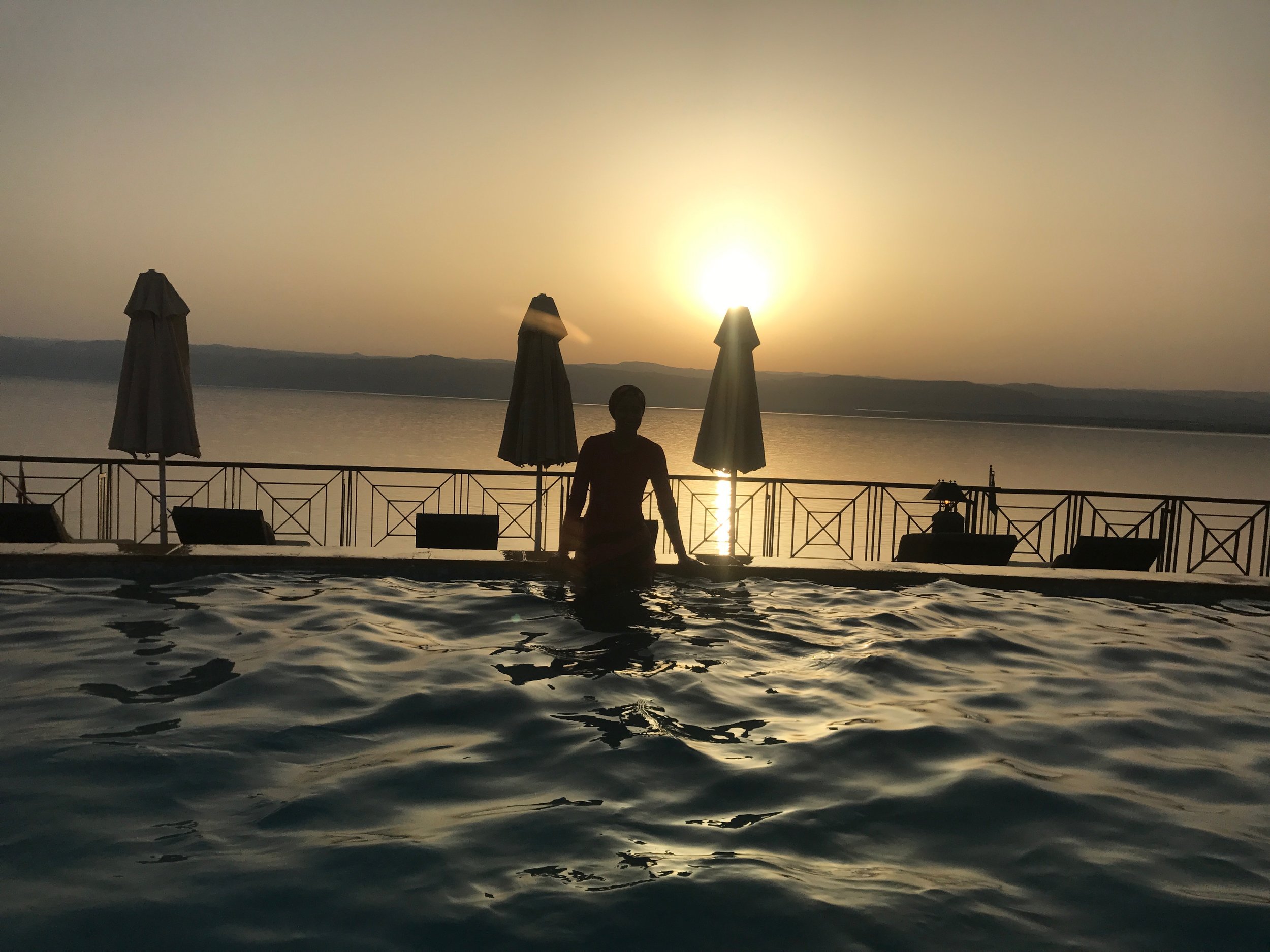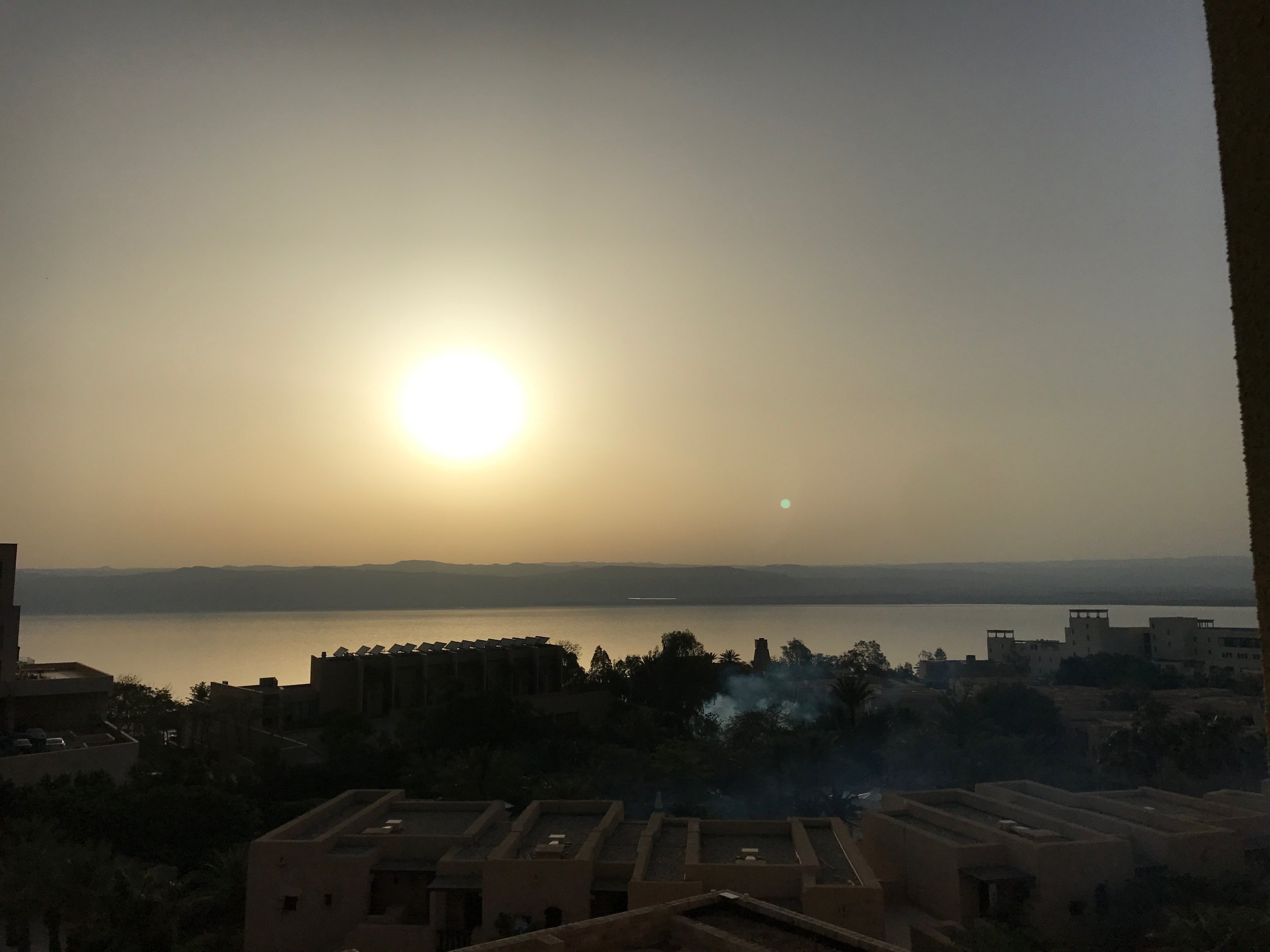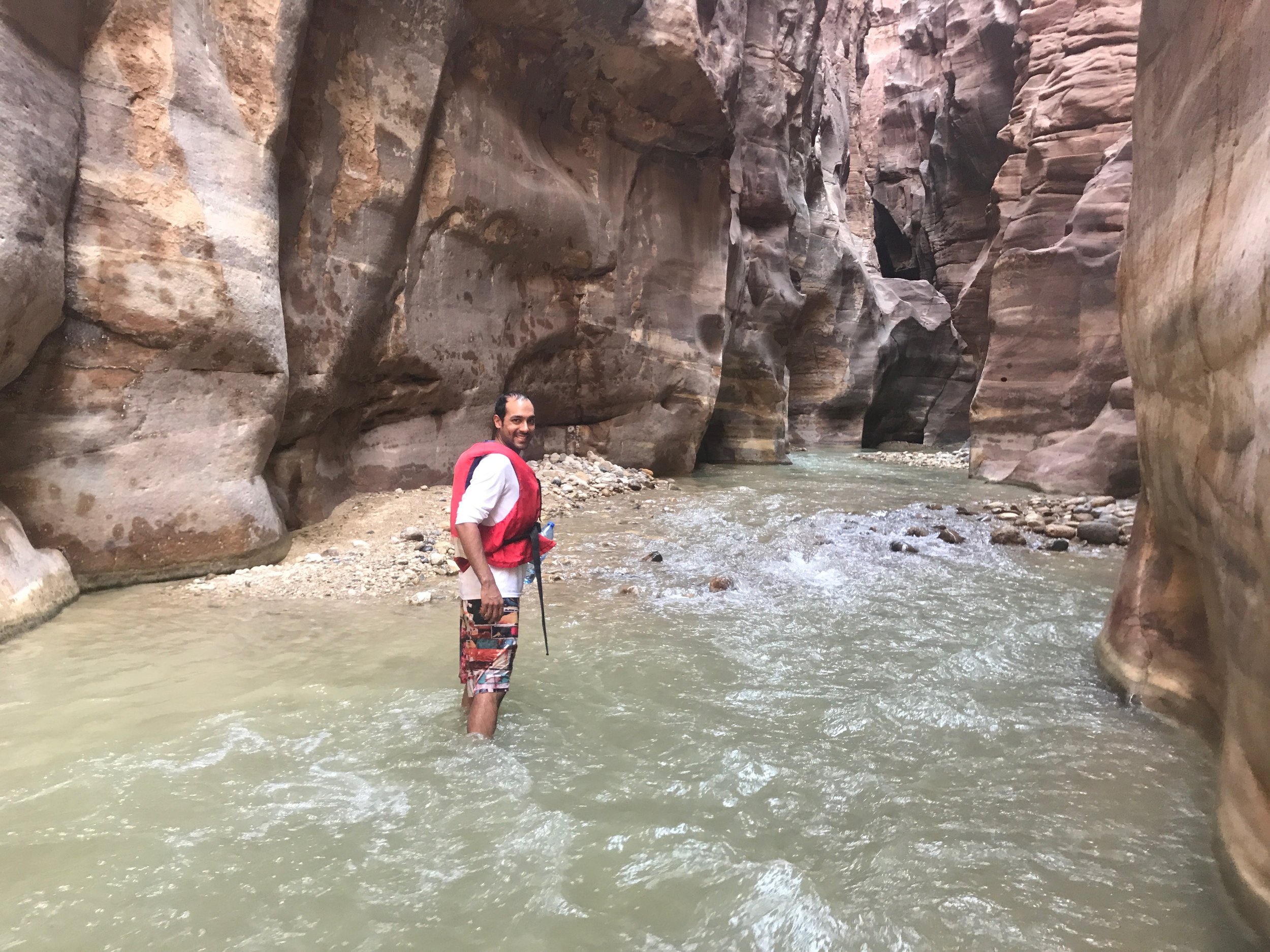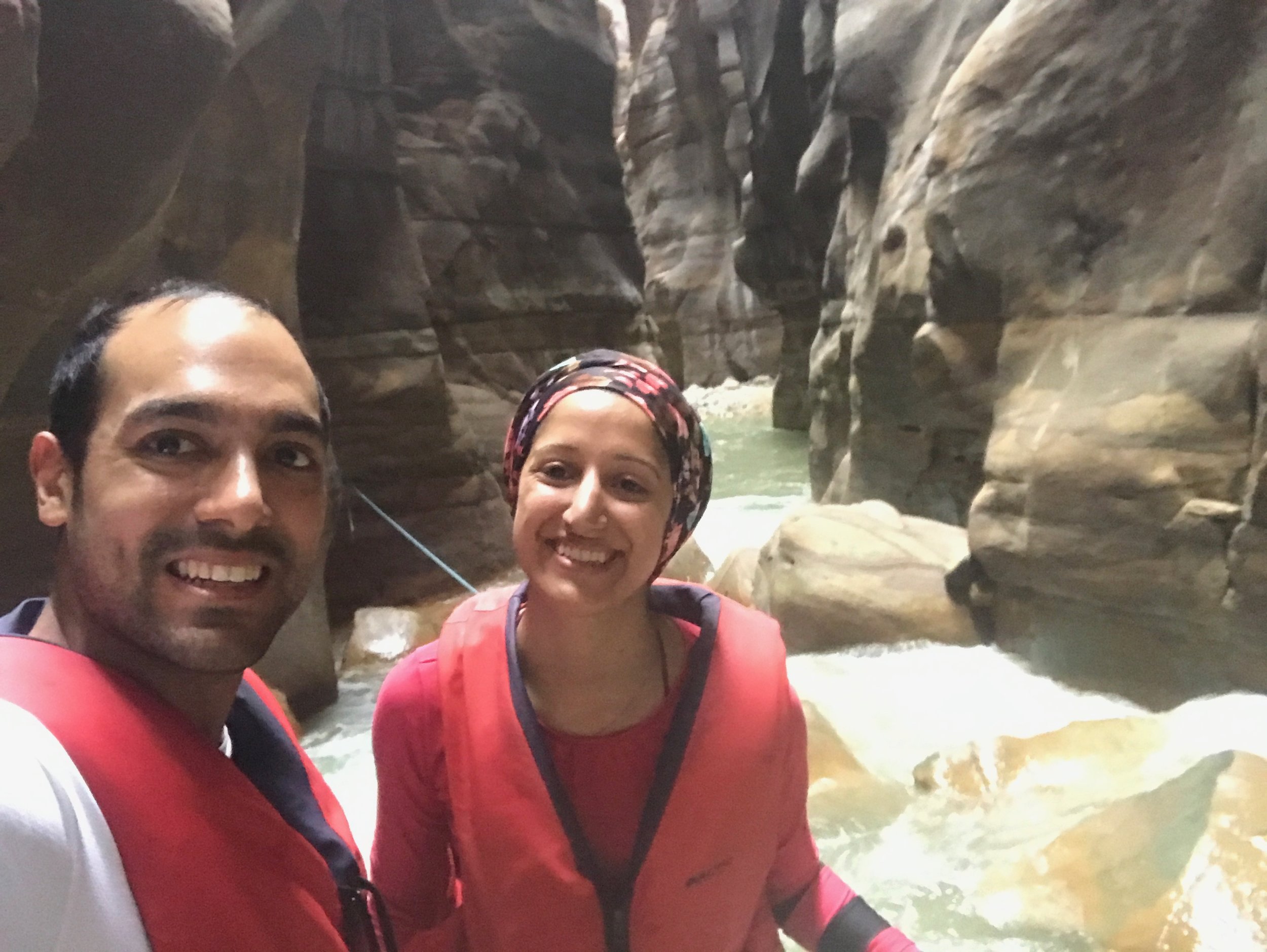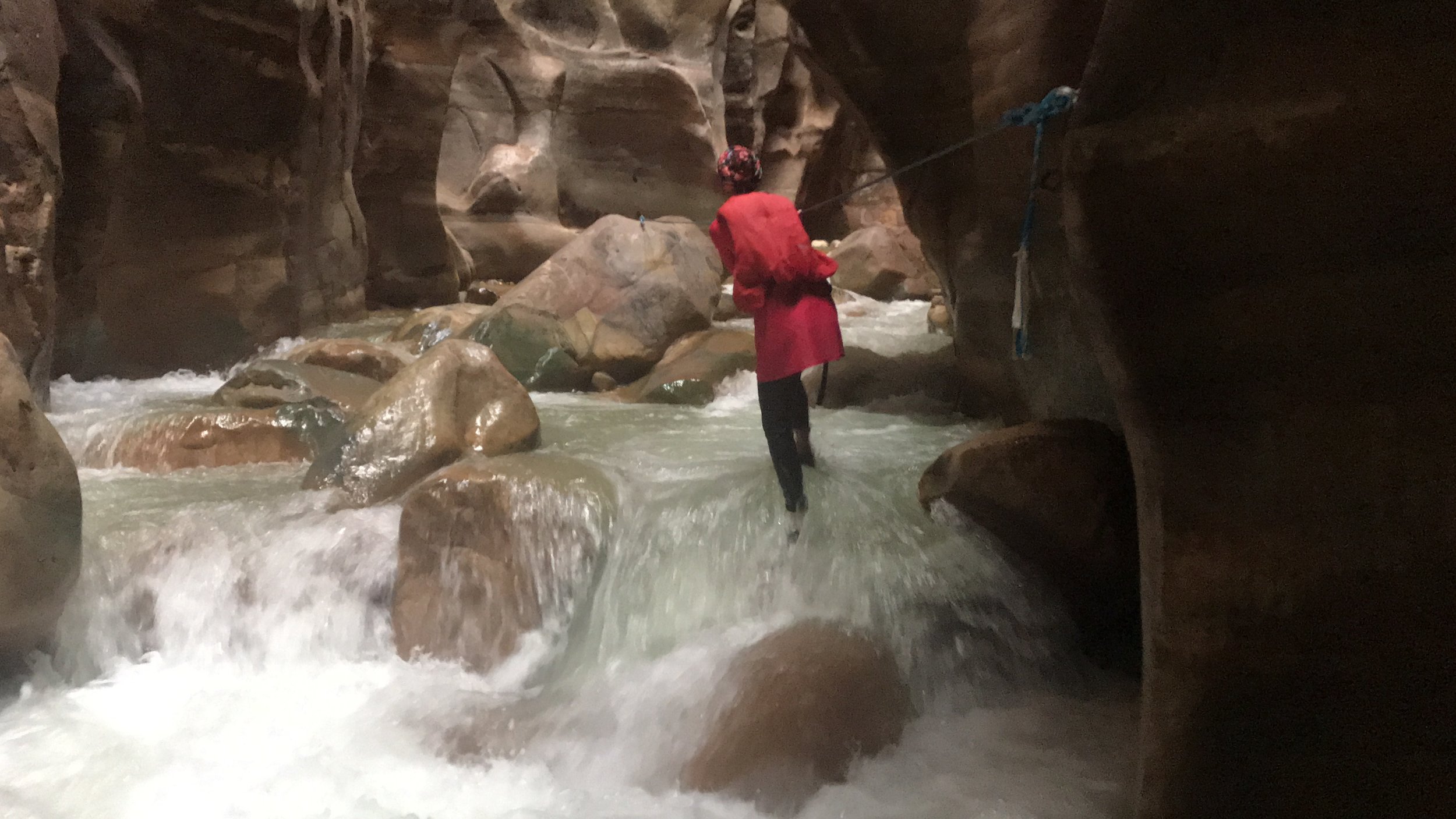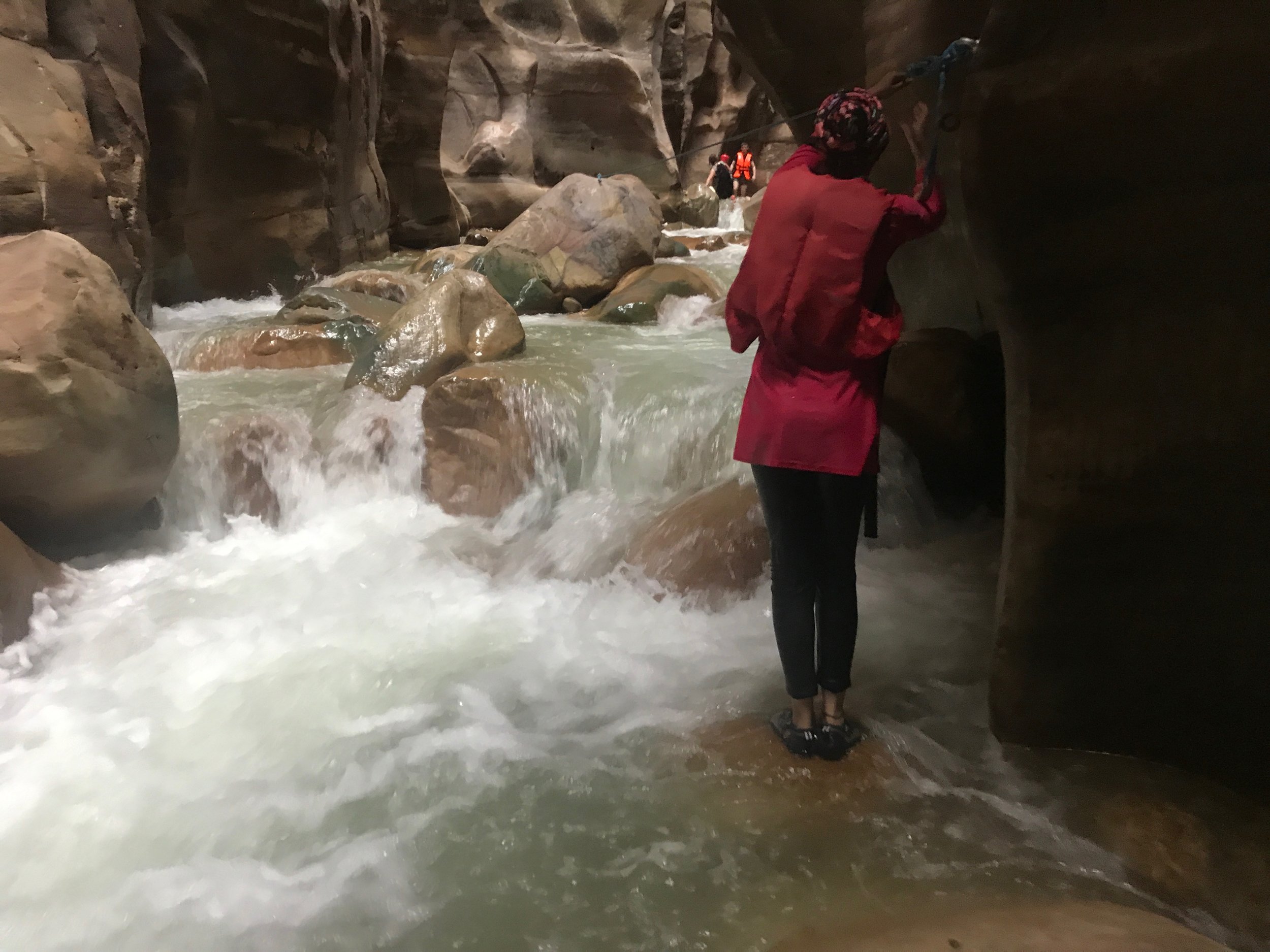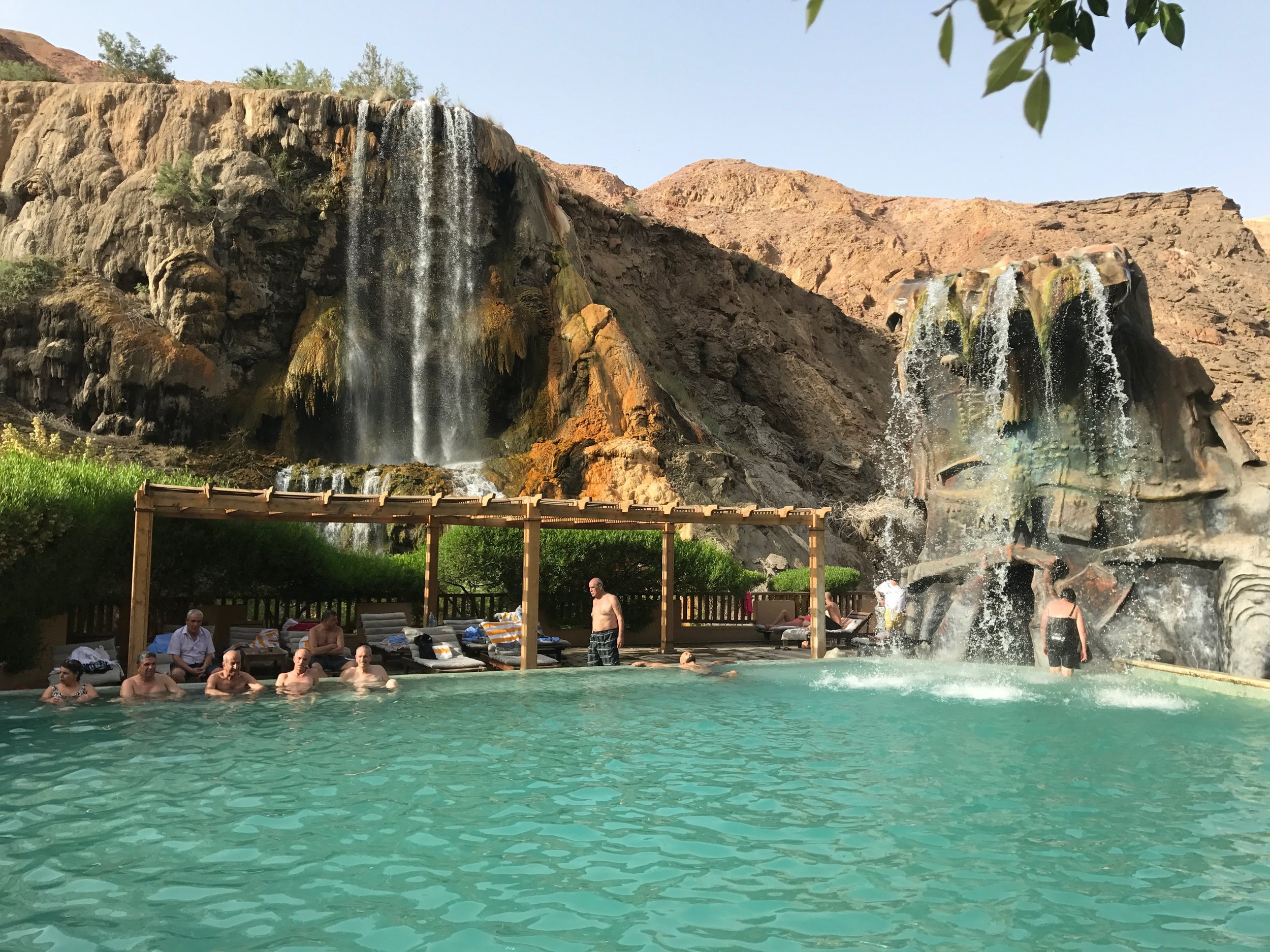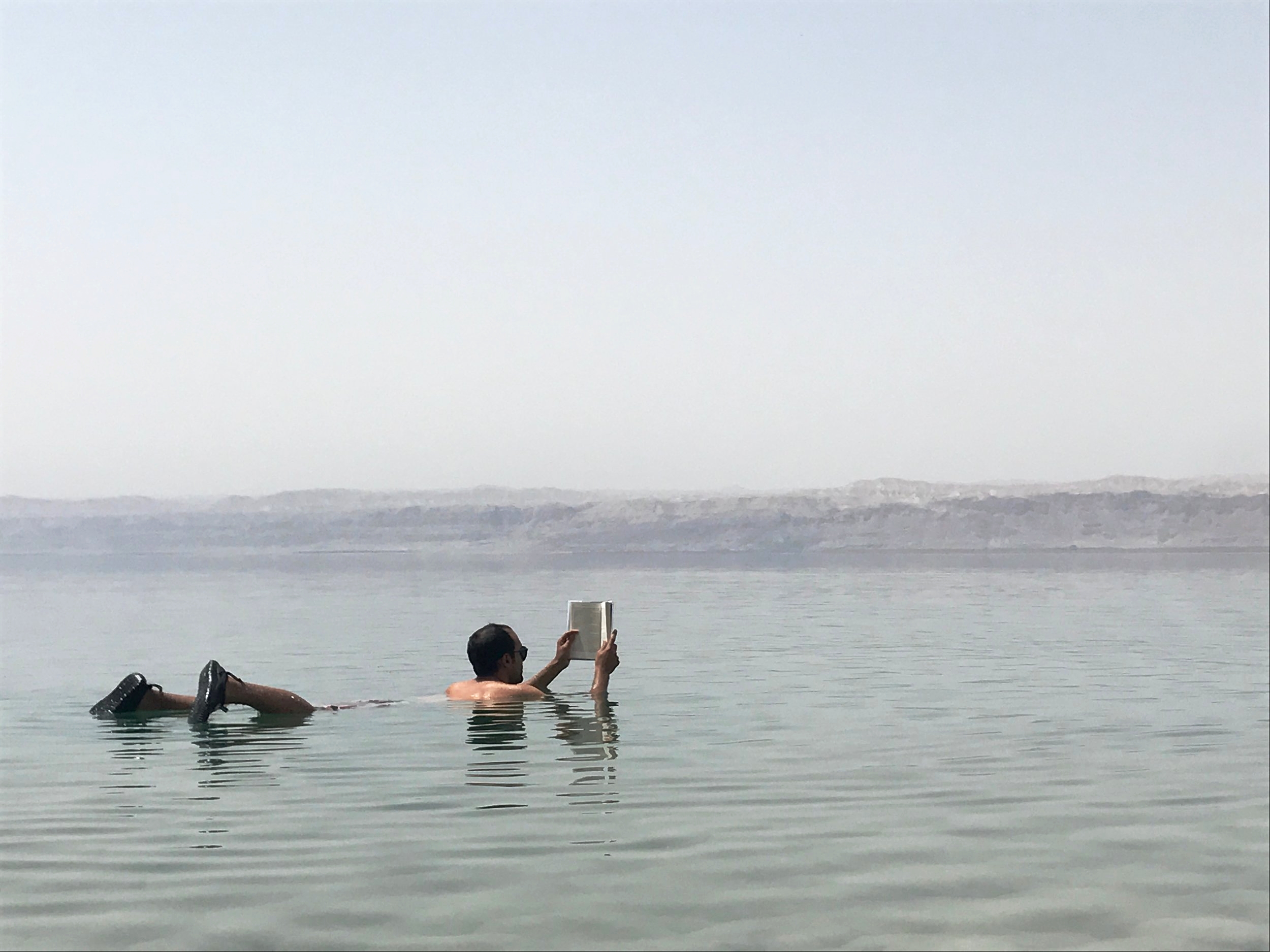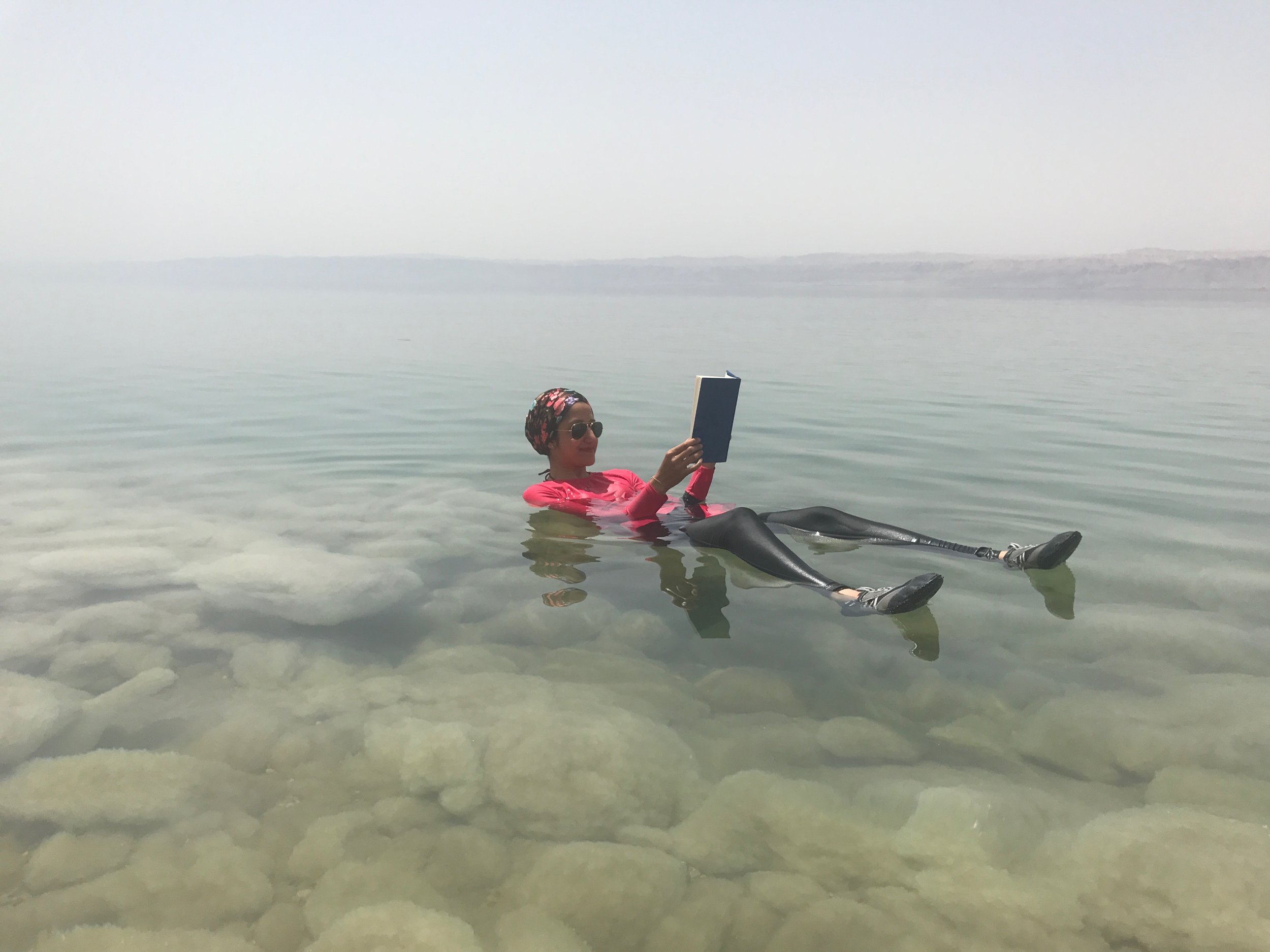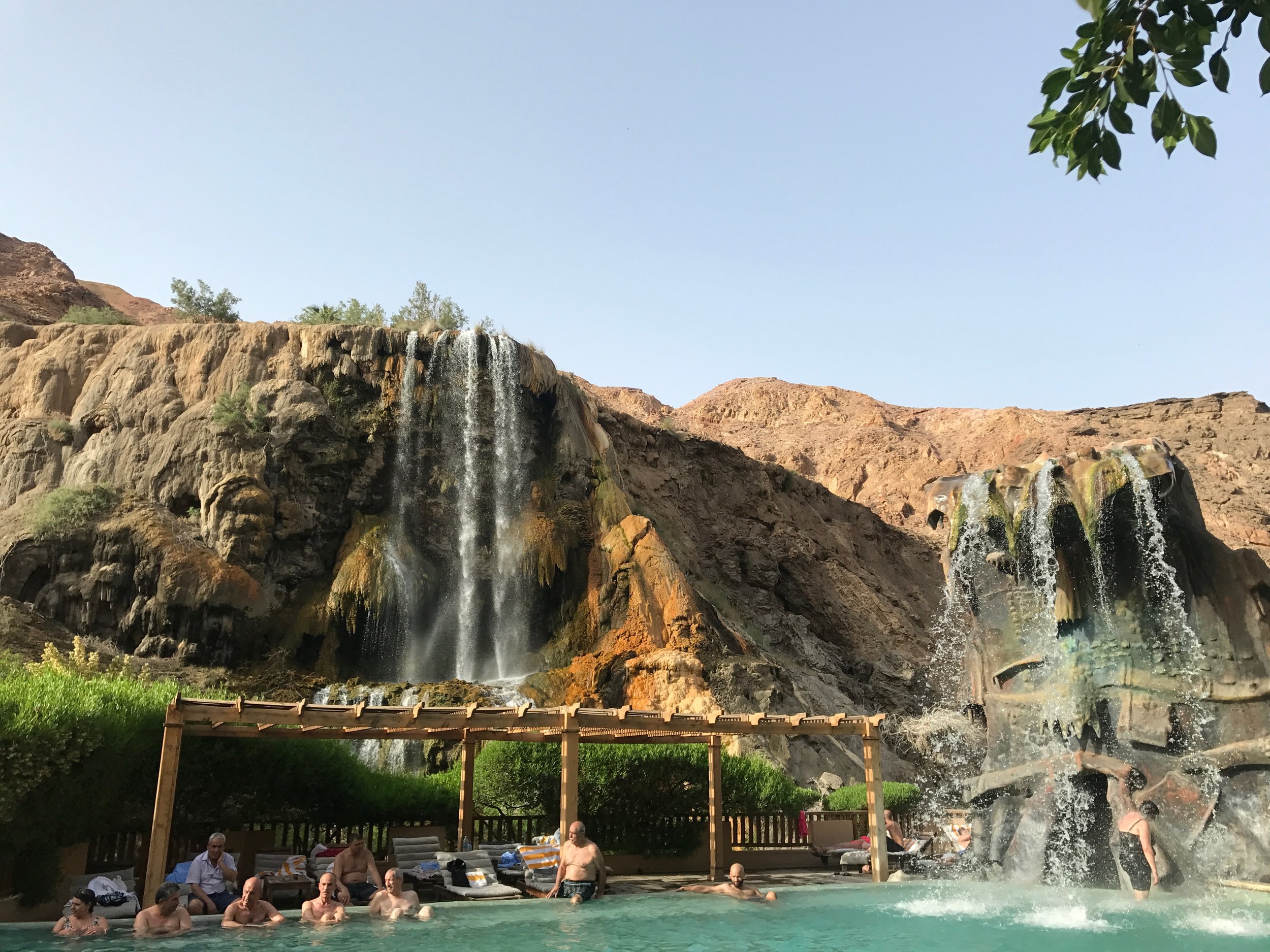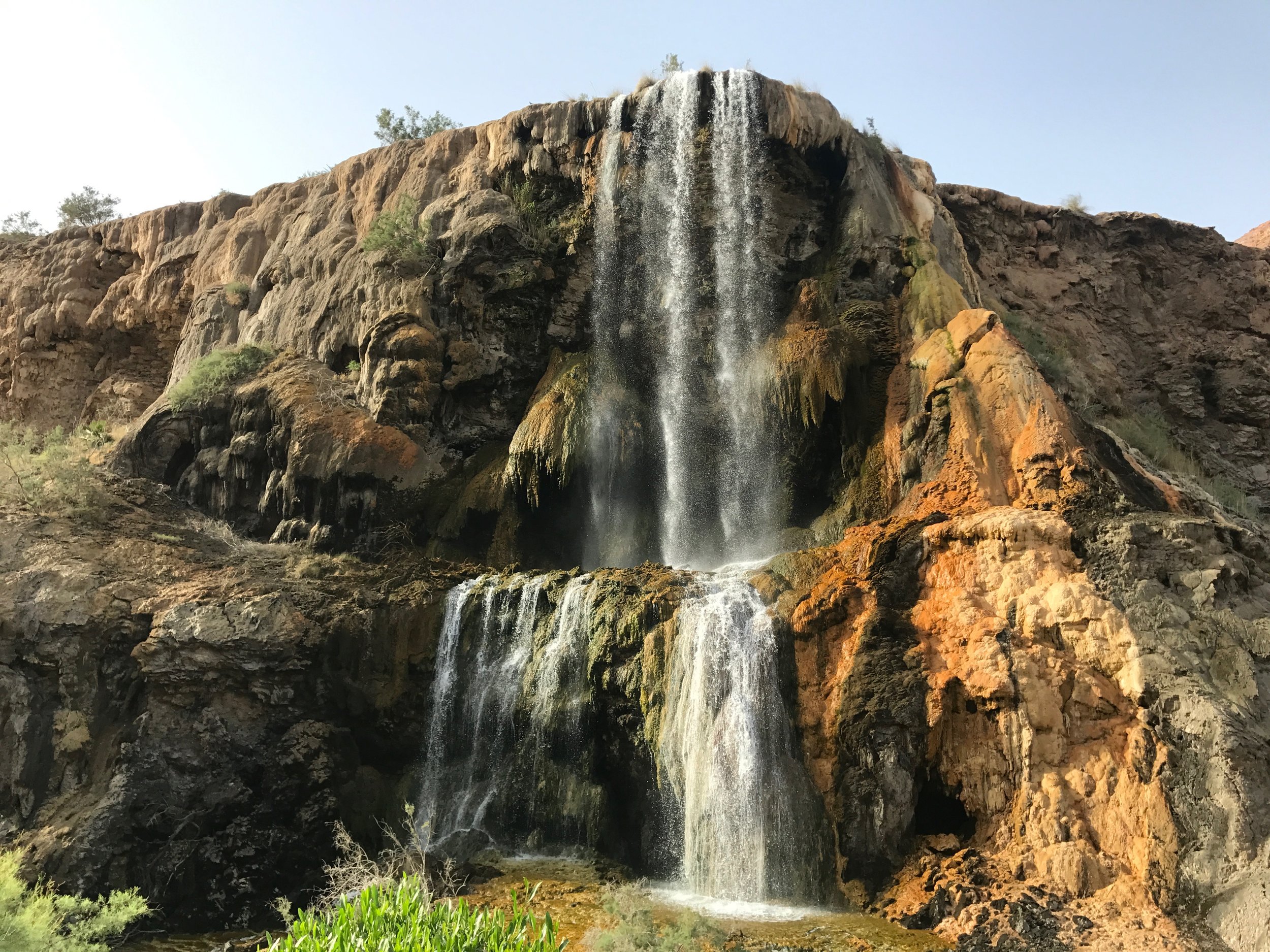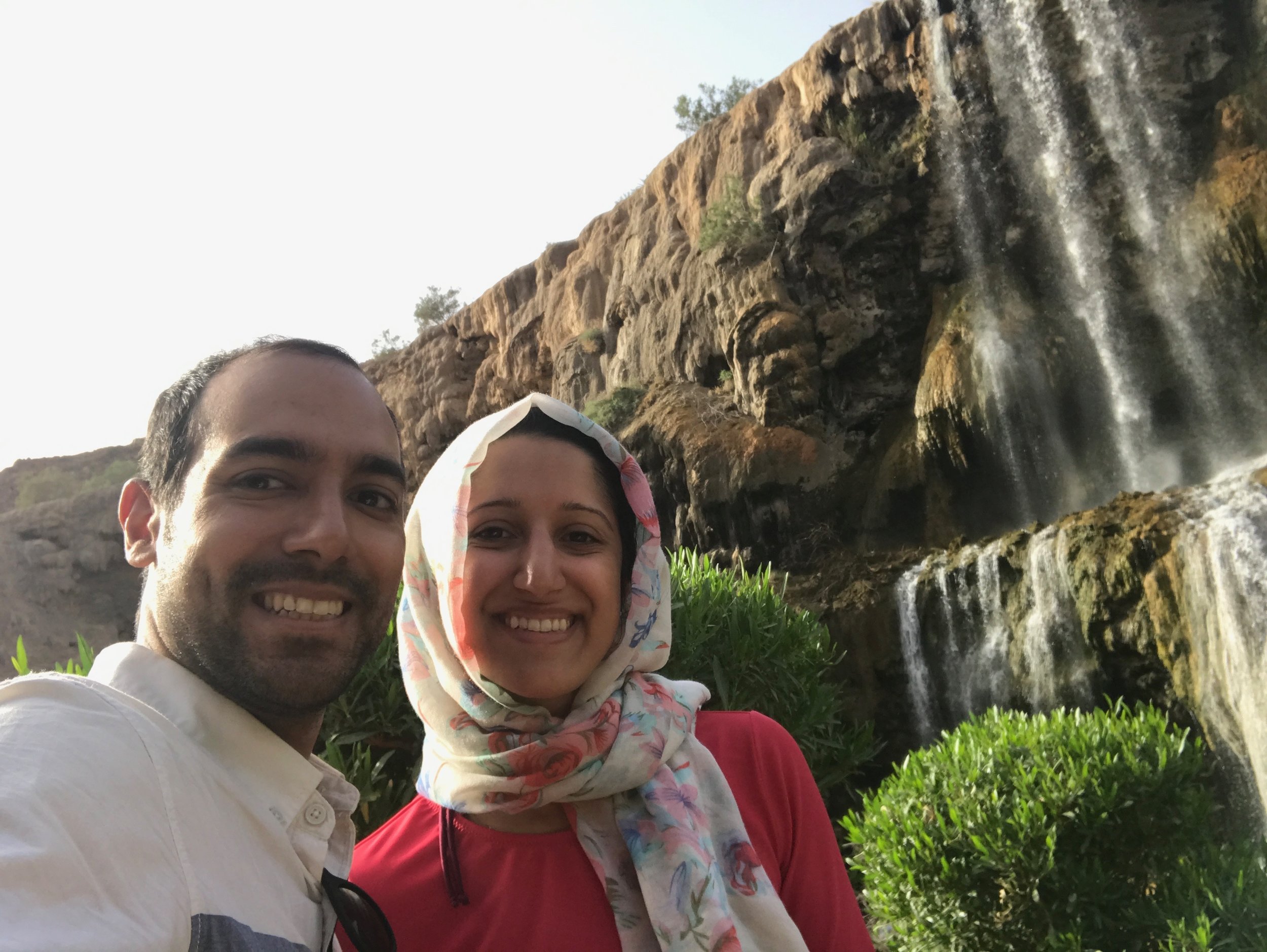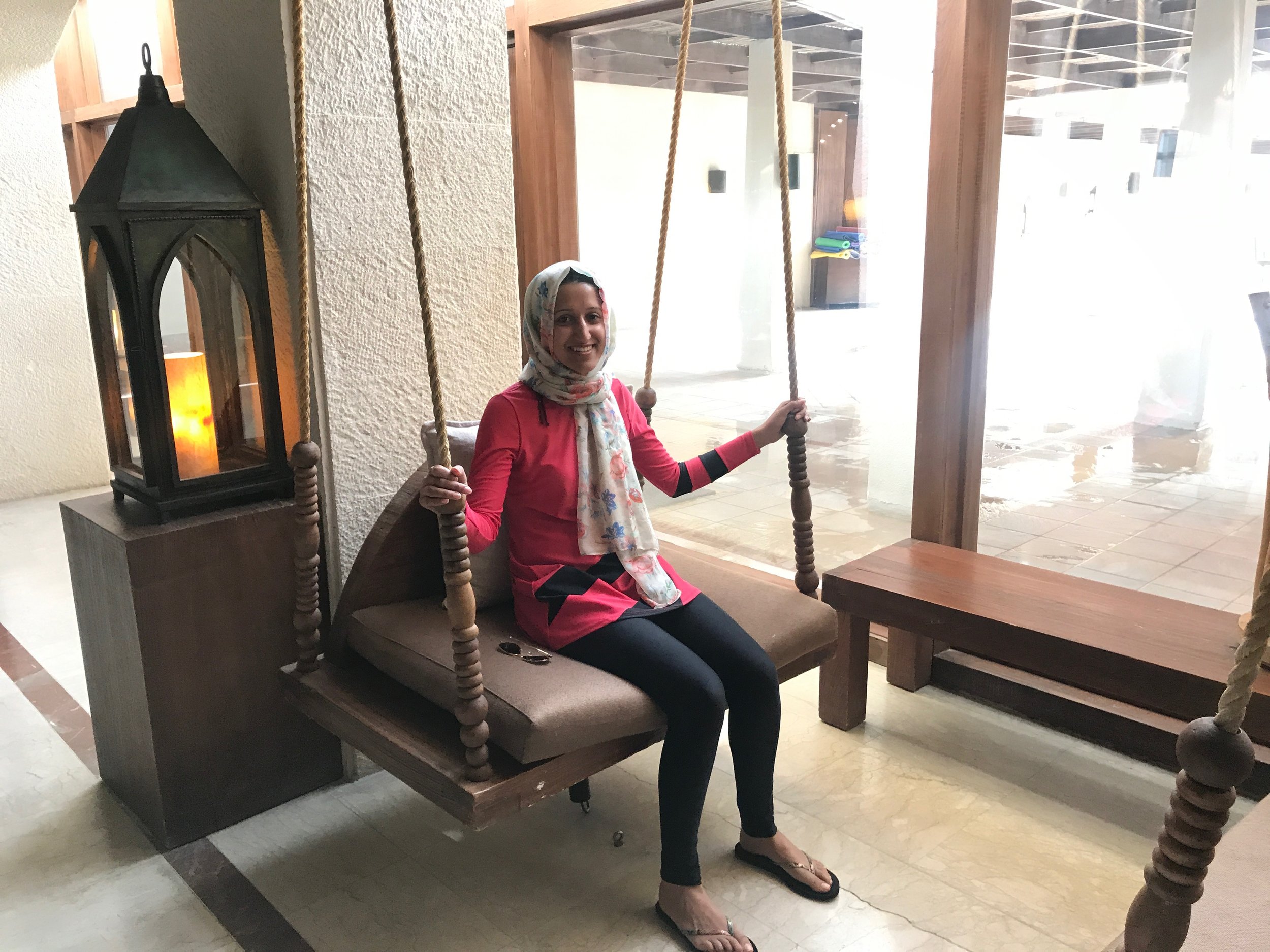Jordan: An 8-Day Adventure

That Time We Floated on Water
You can spend a really long time in Jordan if you want to. Trust us. We spent eight days in the country and would have happily stayed there for longer if we didn't have to go back to work.
Jordan was a country of wonder and revelation, and we found the time to relax too. We've already written a fairly basic itinerary to Jordan, but here's one that has more detail:
Day 1: Amman
We're always a little tired when we land somewhere so we like to start off on a fairly leisurely footing. It's likely that you'll land in Amman if you're coming from a major international hub so explore the capital at the beginning of your trip. Amman is very much not an old, romantically Arab city. New buildings are going up all the time and it's starting to become a thriving metropolis.
We spent our first evening at Beit Sitti, a family-run cooking school. It's homely, quirky, and is both a great way to meet new people and a way to learn how to really make authentic Jordanian (and Palestinian) food. What's even better is that if you have a preference from their huge menu online, you can request to learn how to make a specific dish.
We wanted to learn how to make ma'loubah – the infamous upside down dish – as it's a little daunting and as no-one else had made any requests, we got our choice! We also made moutabal, fresh bread, farmer's salad, and basbouseh (a fairly easy-to-make but delicious dessert we've made a number of times since coming back). We'd thoroughly recommend it.
After finishing up, we ventured downtown (a short 5-minute cab ride away) and enjoyed some drinks at Jafra cafe, one of the more well-known cafe and restaurants in the area.
Dinner: Beit Sitti.
Coffee: Jafra (or Rainbow Street)
Day 2 - Amman
You can spend the next day exploring the incredible Roman ruins of Jerash, which are incredibly large and, if you're still up for it, the Roman ruins in downtown Amman. There are three ways to get to Jerash: drive yourself, call up a random cab on the street and ask them to wait for you at Jerash (they'll normally wait for 2 hours and charge you extra if you spend longer - it should cost about 40-50JD), or book a trip with your hotel. You might be asked if you want to go further north to Ajloun, but if you're only spending two days in Amman, you won't be able to get back in time to see the ruins downtown.
Here are some of our pictures from Jerash:
If you feel like a midday snack, you could get a falafel from Al Quds or Hashem's. And don't forget to try the kneffeh from Habiba's – you can't miss it, just follow the queues!
Before dinner, you can spend some time roaming around Downtown, looking at all the handmade jewellery, buying some CDs for your car, or finding some time to pray at the King Hussein mosque.
Dinner: Sufra (but book in advance!)
Day 3: Drive to Petra via the Eastern desert castles
We're big fans of renting a car to give you the freedom to travel around countries, and Jordan was no exception. It's cheaper and it means you can easily change your mind about your destination – or the route you want to take – at any given moment, something we did a few times on our trip.
We ended up picking up our rental car a little late this day and so headed to see two of the four eastern castles. We chose to go to Qusayr Amra, a palace with remarkable frescoes where Umayyad caliphs used to relax, and Qasr Kharana, believed to be a conference centre. We got kicked out of the first one at about 1pm - the guard decided to close shop early, so make sure you don't get there too late!
We then drove down the Desert Highway to Petra to enjoy the sunset. This was one of the best parts of the trip, as just as we were about to head back into the city (it was getting dark and we were wary of finding our way back from the mountain to the main road!), two men in horses drove up and told another group of people that it was time to pray.
At this point, we were invited to join them around for tea, and they told us that they were a family of bedouins who lived in Petra until it was closed to inhabitants. Now the father, who has a degree in archaeology, gives tours in the old city.
Day 4: Petra
You need time to see Petra, and we were a little limited on that front, so we made sure to start our day bright and early. We really didn't know what to expect, and quickly realising the scale of the the ancient city was extraordinary. And then you finally see the Treasury and the various facades – ornate buildings carved out of the mountains – and you're blown away again.
If you rush, you can see the main spots in a day, but if you want to take your time – and see more – you need at least a day and a half, if not two days. We've written a longer post on Petra, which will include details on making the most of your visit.
We left shortly before sunset to drive to Aqaba.
Day 5: Aqaba (Red Sea)
After four action-packed days – and especially following a gruelling day in Petra – Aqaba can be a good opportunity to wind down and relax by the sea. The public beaches are free to visit, but if you want a sunbed or a beach cafe, you might have to pay to visit a resort. Aqaba is famous for its fish so take the time to go snorkelling or even scuba-diving if that's something you're into.
Most of the hotels here aren't located by the sea, unless you're willing to pay large sums, but you can access the public beaches easily. They're free and have good restroom facilities. It's also here that you'll find the best snorkelling areas.
Dinner: Venture into the city centre to see another Jordanian city. The mosque here is also beautiful.
Day 6: Wadi Rum
Get lost in the desert on day 6. No, really. Wadi Rum feels like nothing else you'll have seen before because it really is an expansive desert. You'll see old Islamic inscriptions, hear stories about Lawrence of Arabia, climb bridges, and get very, very hot while being driven on the back of a pick-up truck.
You'll also have the opportunity to sand-board down a sand dune and stop off at plenty of pit stops to have some tea and speak to some of the locals.
After a great day, you'll eat dinner with others in your camp, and get to spend a night (almost) under the stars - you'll have an actual tent! Get ready to see all the stars in the sky.
Day 7: King's Highway & Wadi Mujib
The drive to Wadi Mujib isn't short, but it's pretty beautiful as you'll pass through cities, and valleys, especially if you take the King's Highway. If you're not in a rush, it's easy to drive first to Shobak castle, before going to Wadi Mujib.
The latter was a highlight of our trip; like white water rafting, except you're going against the current without a boat. Take the Siq trail: It's fun, but bruising! One of the most extraordinary parts about the trail is that the mountains are really similar to Petra in the way they have evolved over time. It's also not for kids. There are some areas where the current is remarkably fast and the water is very deep. If you're worried about this, you can pay for a guide to help you (20JD each, plus 30JD for a guide).
Once you're done, head to the Dead Sea. You should get a chance to float in the water during sunset!
Lunch: Stop somewhere in Tafila on your way to Wadi Mujib.
Day 8: Dead Sea and ✈️
It's your last day, relax! Spend the day putting Dead Sea mud on yourself, floating the sea and then enjoying the warm water in a pool.
If you have an extra day, you might want to stay at the Ma'in Hot Springs for one night. The public springs here can get very busy on weekends and get to 60 degrees Celsius, but residents of the the hotel can access the private pool, still from fresh springs. It's not as hot – about 30-40 degrees – which makes for a lovely, and unusual, way to relax after dinner. The hotel is really well-maintained and was a great place to stay.
Before heading to the airport, you can try and visit Mount Nebo, where Moses was reportedly shown the Promised Land, according to the Hebrew Bible, and see if you can spot Jerusalem. You might also find time to make a short stop in Madaba, a Christian town, which has an ancient mosaic map of the Holy Land. You can also buy your own mosaics here, which make for great souvenirs or gifts.
Any extra days? Here's what else you can do:
Visit Dana Biosphere, or stay at Mujib Biosphere Reserve
What you need to know before planning your trip:
If your flight takes a detour through Turkey, and you have to take an internal flight (for example Istanbul to Ankara), you need to get a visa. Do it online to save yourself some time.
If you want to visit Petra, get the Jordan Pass before your trip as it works out far cheaper that way. The JP includes your visa (which you would otherwise buy at the airport) as well as access to plenty of the country's sights. The one downside? You have to know how many days you'll spend in Petra in advance.
Don't rent a car while you're in Amman. You'll be stuck waiting in traffic (especially on weekdays) and taxis within the city are pretty cheap. The maximum fare from one part of the city to the other is 5 JD. You'll obviously lose out a little when you go to Jerash, but you should be able to negotiate a fare with a taxi driver to the ruins, wait for you, and then drop you off to downtown for about 40-45 JD.
Do think about renting a car for the rest of the trip. Just make sure you pay for insurance or buy third party excess insurance before your trip to save yourself some money. You can never control how others drive!
Take water shoes with you. They're fairly cheap – about £10 on Amazon – but pretty essential for both the Dead Sea and Wadi Mujib.
Try and avoid planning your trip around Ramadan. While it might be nice to be in the country during the period, a lot of places (such as Wadi Mujib) might be closed.
If you don't want to drive, you can always look for drivers online. That's a more expensive route, but gives you similar freedom (and also tips from a local).
You won't always get great internet access in hotels - download some shows and movies on Netflix to your device.
There are no toilet facilities during the tour of Wadi Rum, so be sure to go at the entrance before you start the day!
If you're prone to hay fever, it's fairly likely that you'll be allergic to the dust, so make sure you bring your tablets.

















